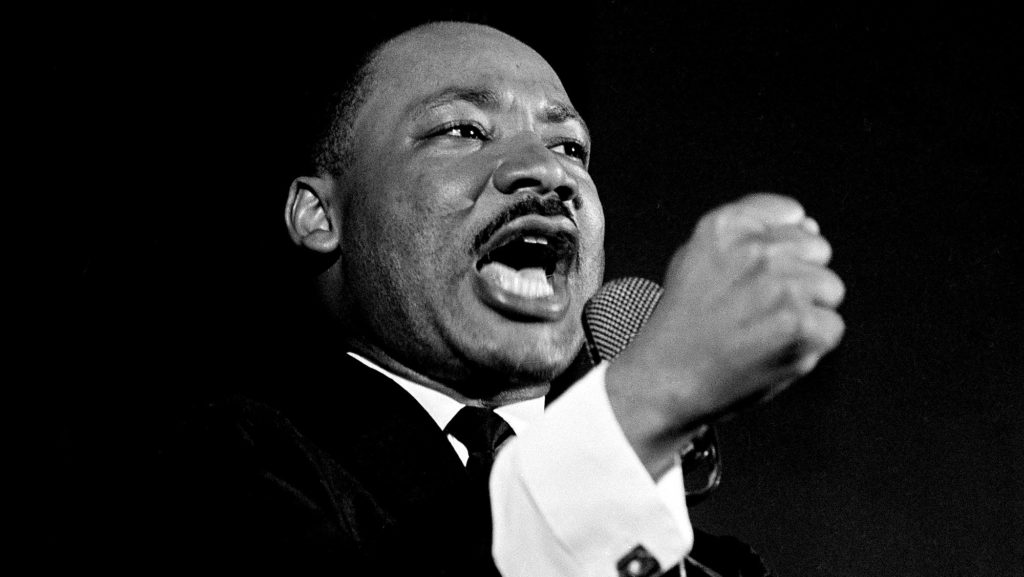Preaching a message of nonviolent resistance, the Rev. Martin Luther King Jr. was the leading voice of the American civil rights movement.
The protests he organized, the marches he led and the speeches he delivered continue to resonate today. They were also key in bringing about landmark legislation such as the Civil Rights Act of 1964 and the Voting Rights Act of 1965.
For his efforts to fight racial inequality, King became the youngest person to win the Nobel Peace Prize. And years after his death, his birthday became a national holiday. Many schools, streets and buildings are named after King, and in 2011 he became the first African-American to receive a monument on the National Mall in Washington.
As we pause to remember King’s legacy, here’s a look back at his defining years in pictures.
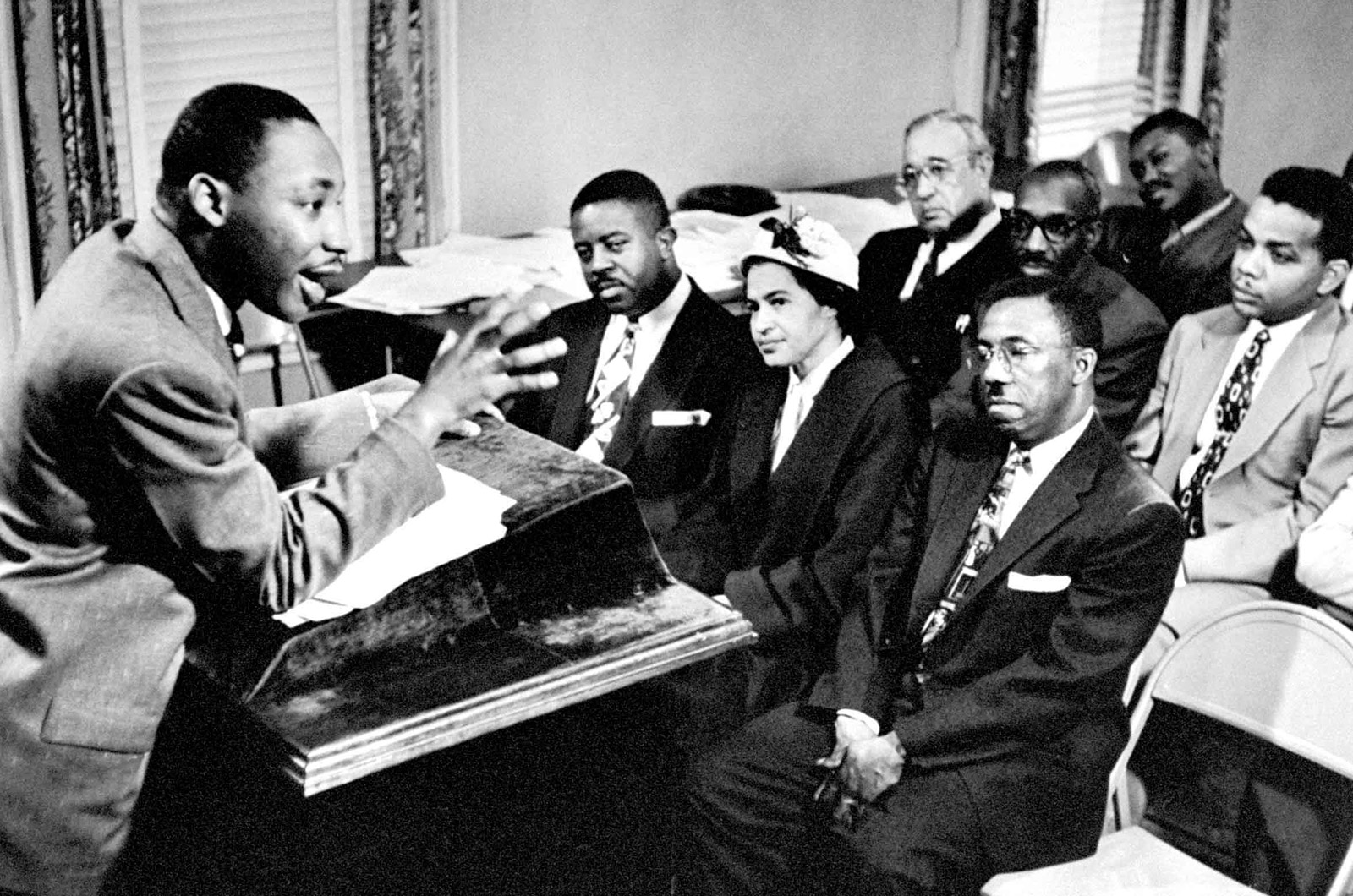
On January 27, 1956, King outlines strategies for the Montgomery bus boycott in Alabama. In the front row is Rosa Parks, a seamstress who sparked the yearlong boycott when she refused to give up her bus seat to a white man. Don Cravens/The LIFE Images Collection/Getty Images
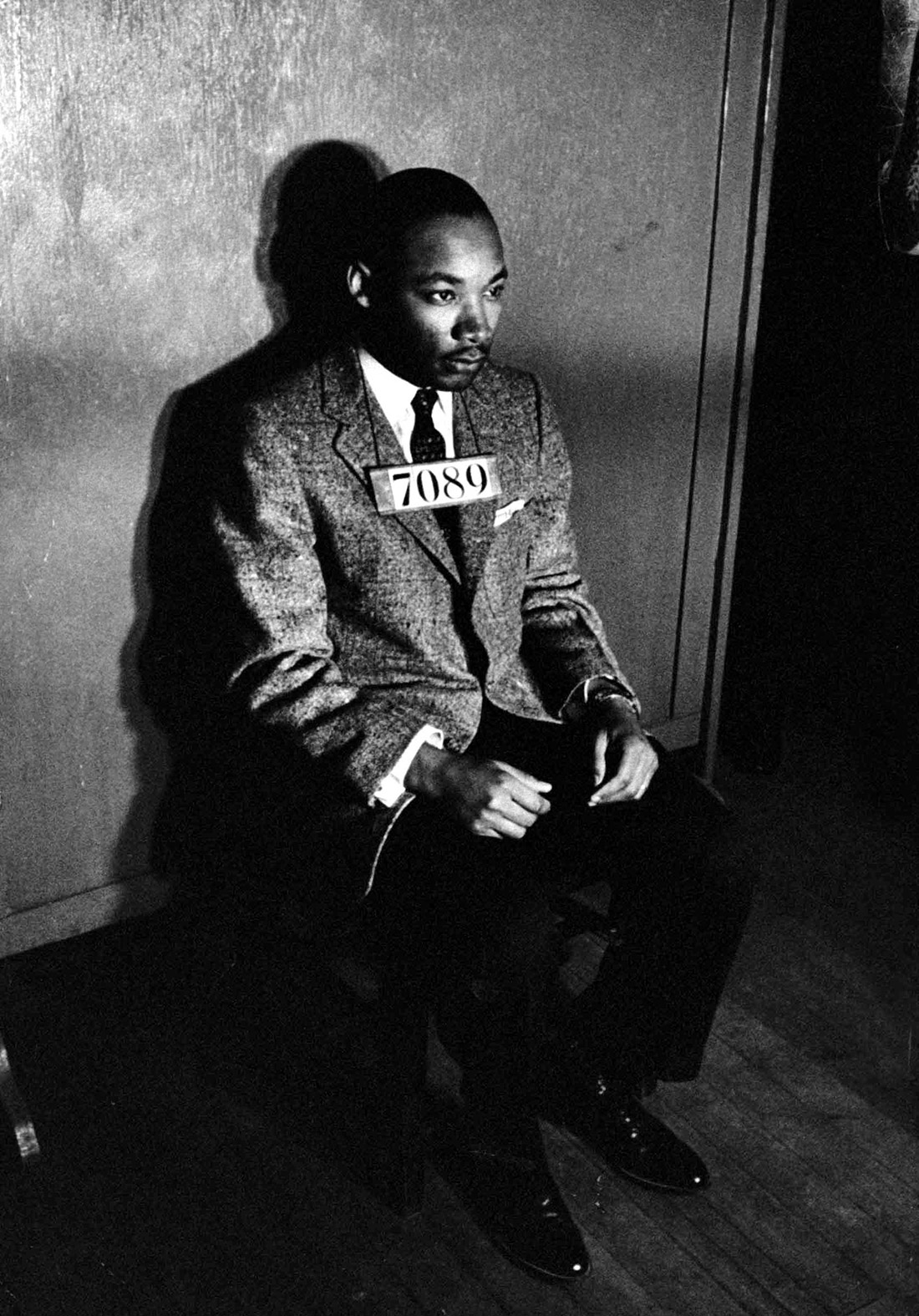
King sits for a police mugshot in February 1956 after he was arrested for directing the Montgomery bus boycott. Don Cravens/The LIFE Images Collection/Getty Images

King relaxes at home with his wife, Coretta, and his daughter Yolanda in May 1956. The Kings had four children in all. Michael Ochs Archives/Getty Images
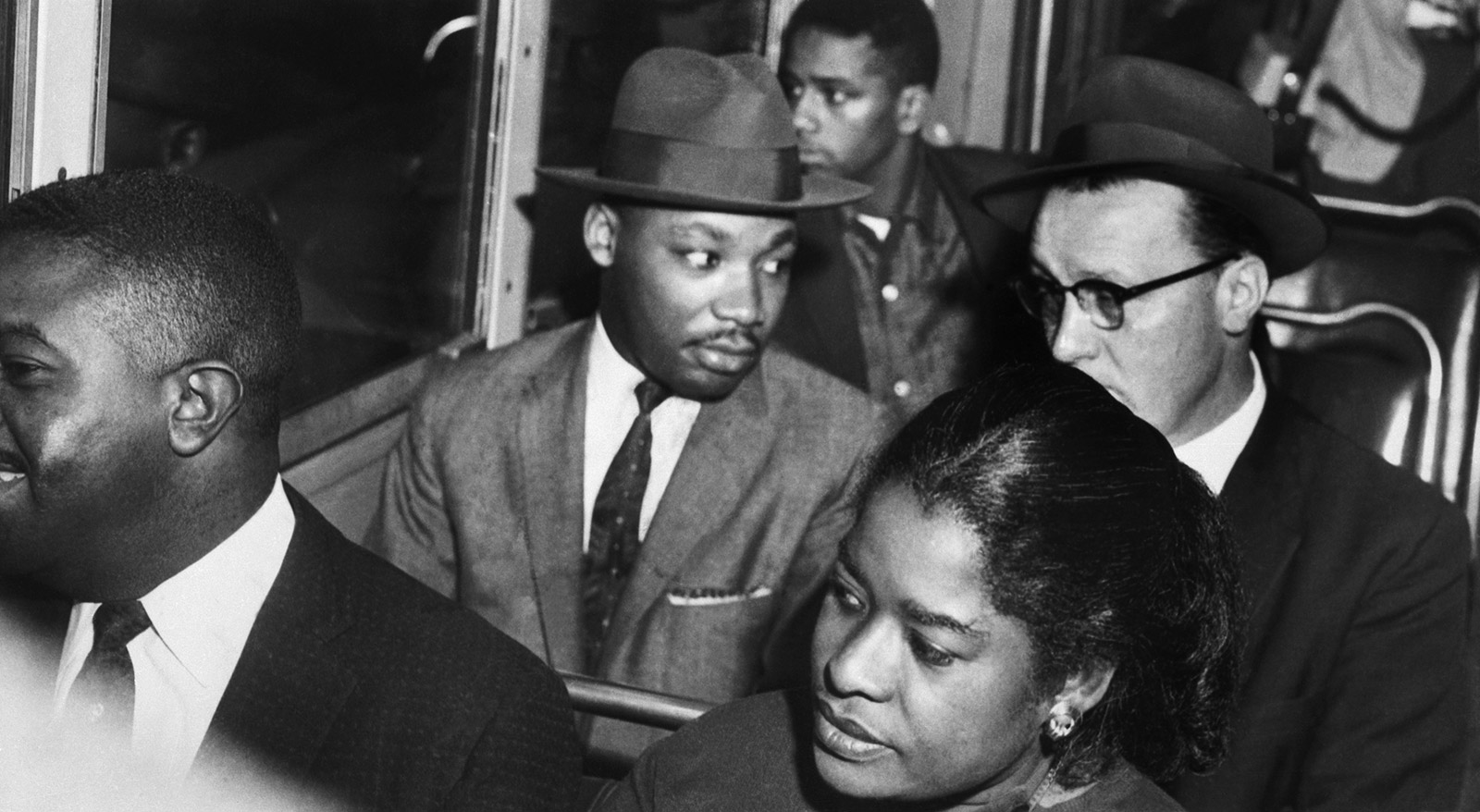
The US Supreme Court ruled in November 1956 that bus segregation laws were unconstitutional. Here, King rides a Montgomery bus in December 1956, a day after the boycott ended. Bettmann Archive/Getty Images
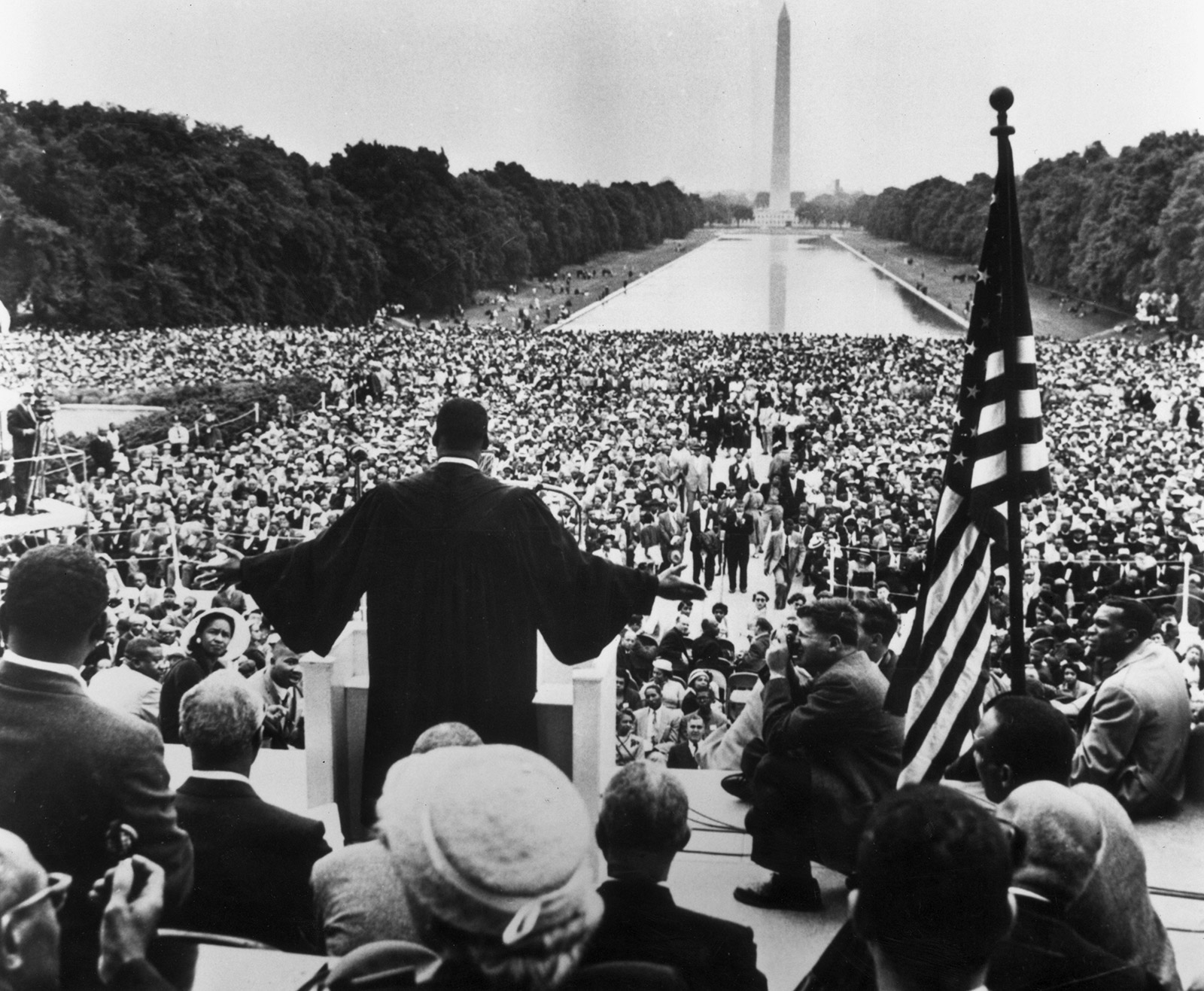
King speaks near the Reflecting Pool in Washington as part of the Prayer Pilgrimage for Freedom in May 1957. It was the first time King addressed a national audience, and his “Give Us the Ballot” speech called for equal voting rights. Hulton Archive/Getty Images
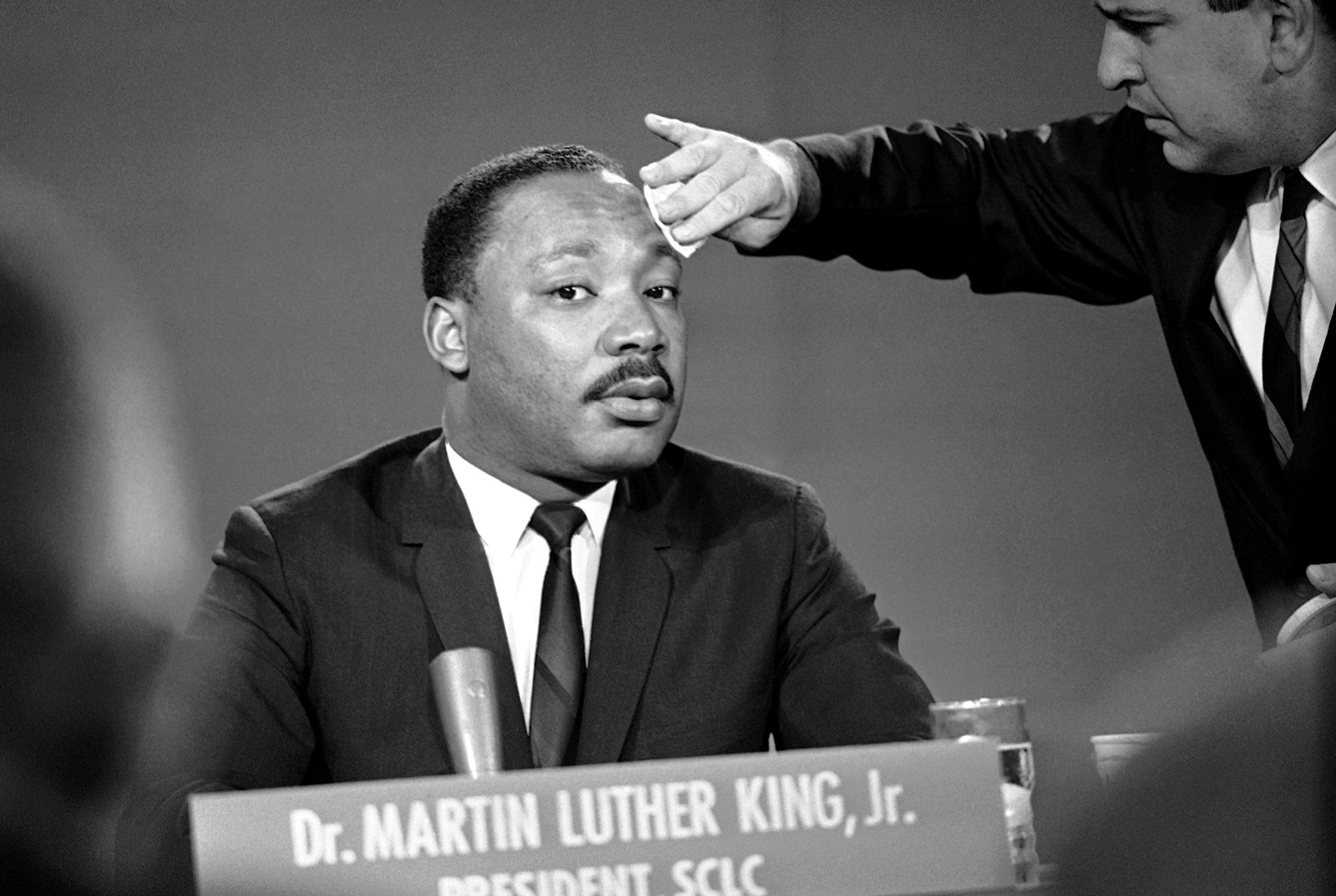
A man applies a little powder on King’s brow before King appeared on NBC’s “Meet the Press” television show in August 1957. Henry Burroughs/AP
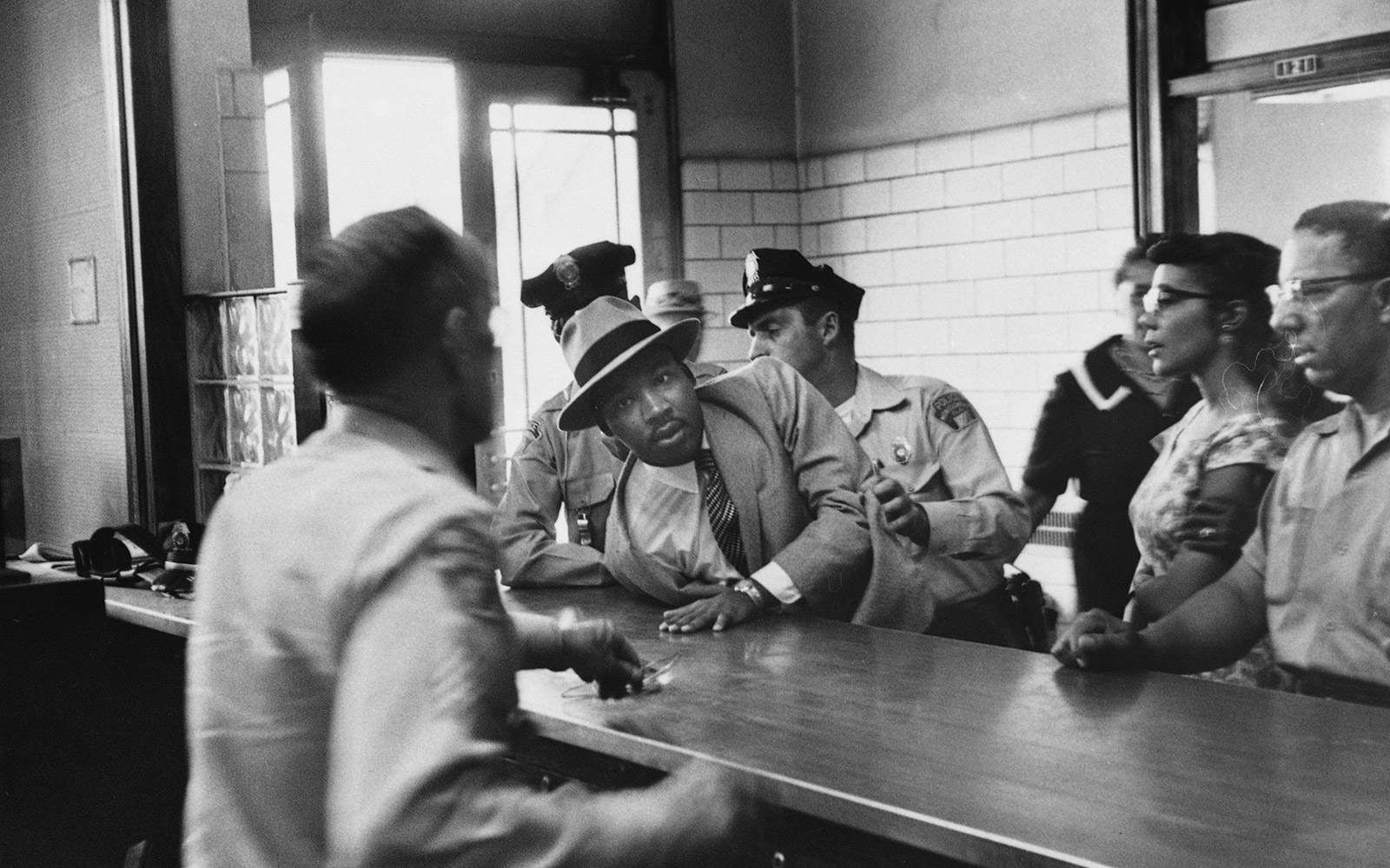
Police officers push King across a desk in Montgomery, Alabama, as he is booked for loitering near a courtroom on September 3, 1958. King was trying to enter the hearing of a man who was accused of attacking one of King’s colleagues, Ralph Abernathy. Charles Moore/Getty Images
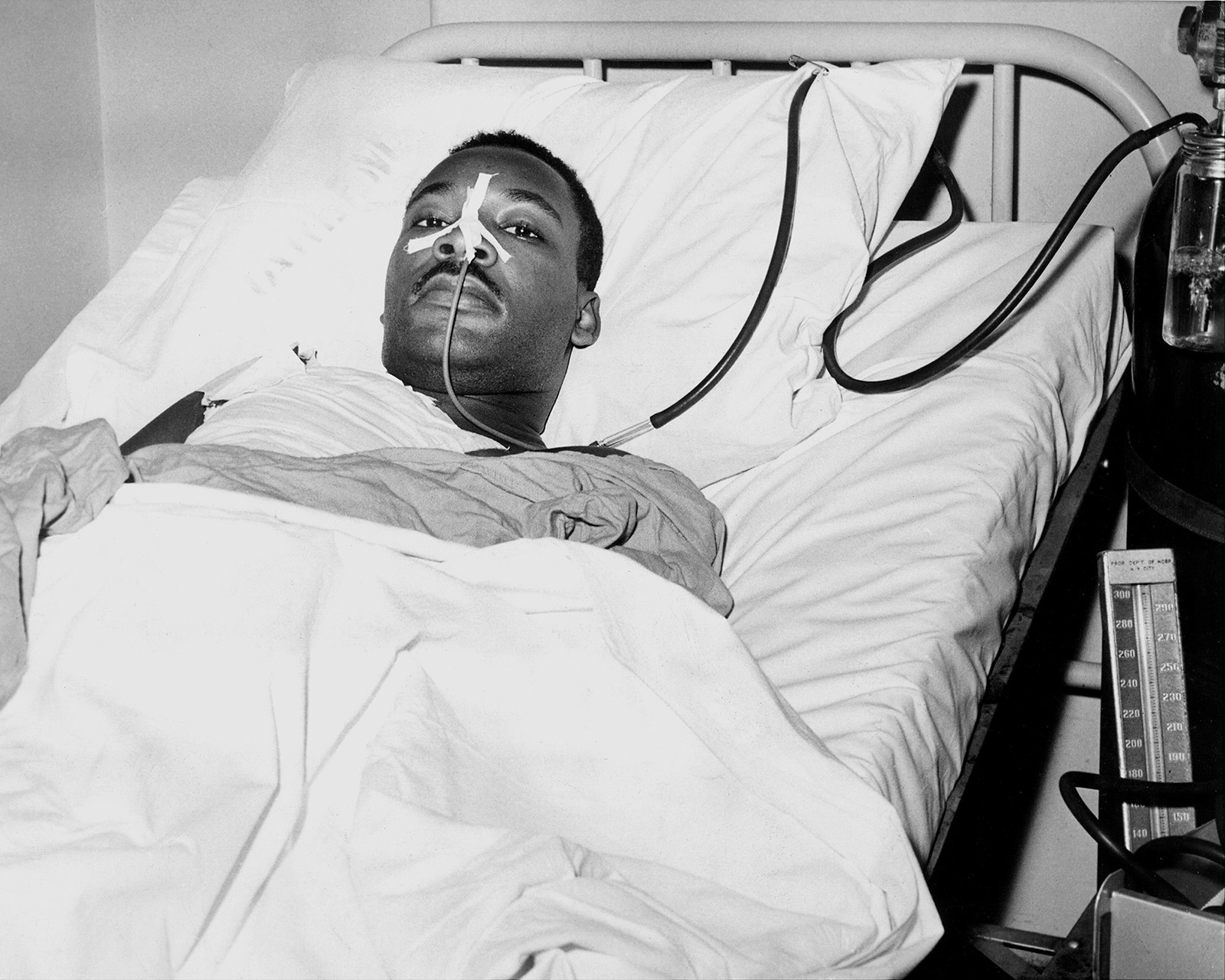
King is photographed at Harlem Hospital in New York after he was stabbed in the chest on September 20, 1958. The near-fatal incident occurred when he was autographing copies of his book “Stride Toward Freedom” at a Harlem bookstore. The attacker was Izola Curry, a mentally ill black woman who was later committed to a hospital herself.
Pat Candido/NY Daily News Archive/Getty Images
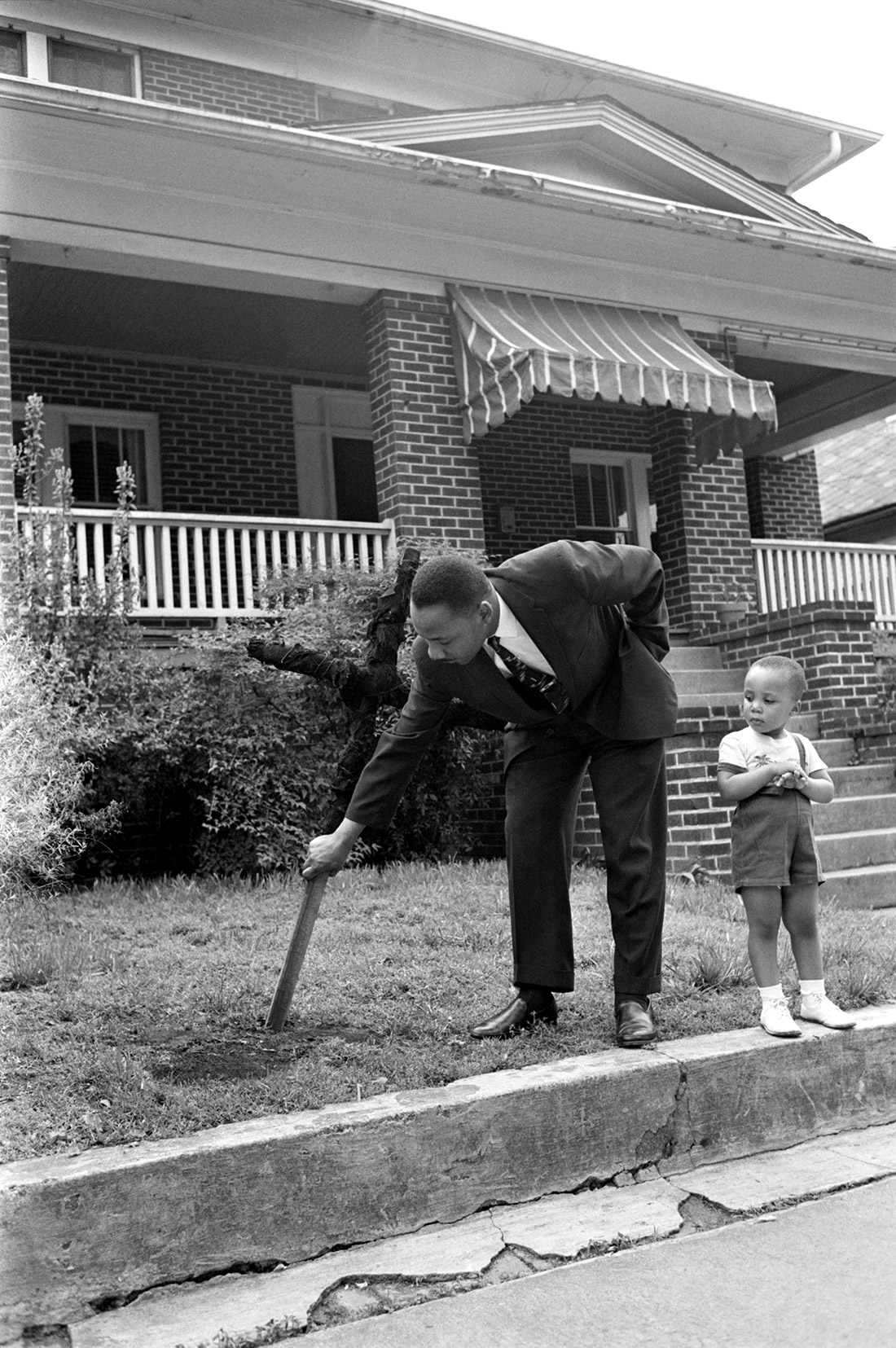
With his son Martin Luther III standing next to him, King pulls up a cross that had been burned on the front lawn of his home in April 1960. Bettmann Archive/Getty Images
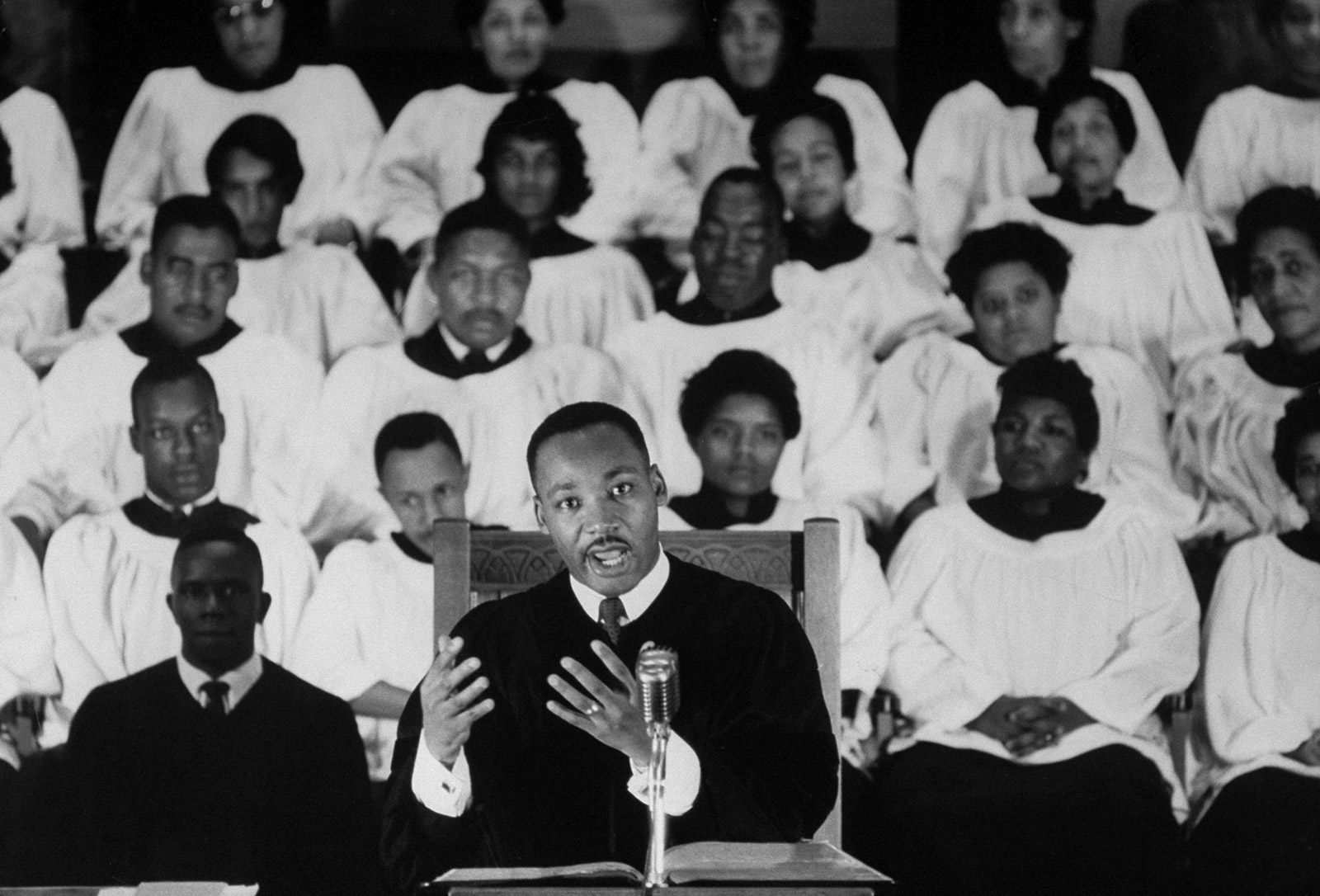
King delivers a sermon at Ebenezer Baptist Church in Atlanta in September 1960. He became the co-pastor there with his father after moving his family from Montgomery. King was born in Atlanta, and he attended Morehouse College there in the 1940s. Donald Uhrbrock/The LIFE Images Collection/Getty Images
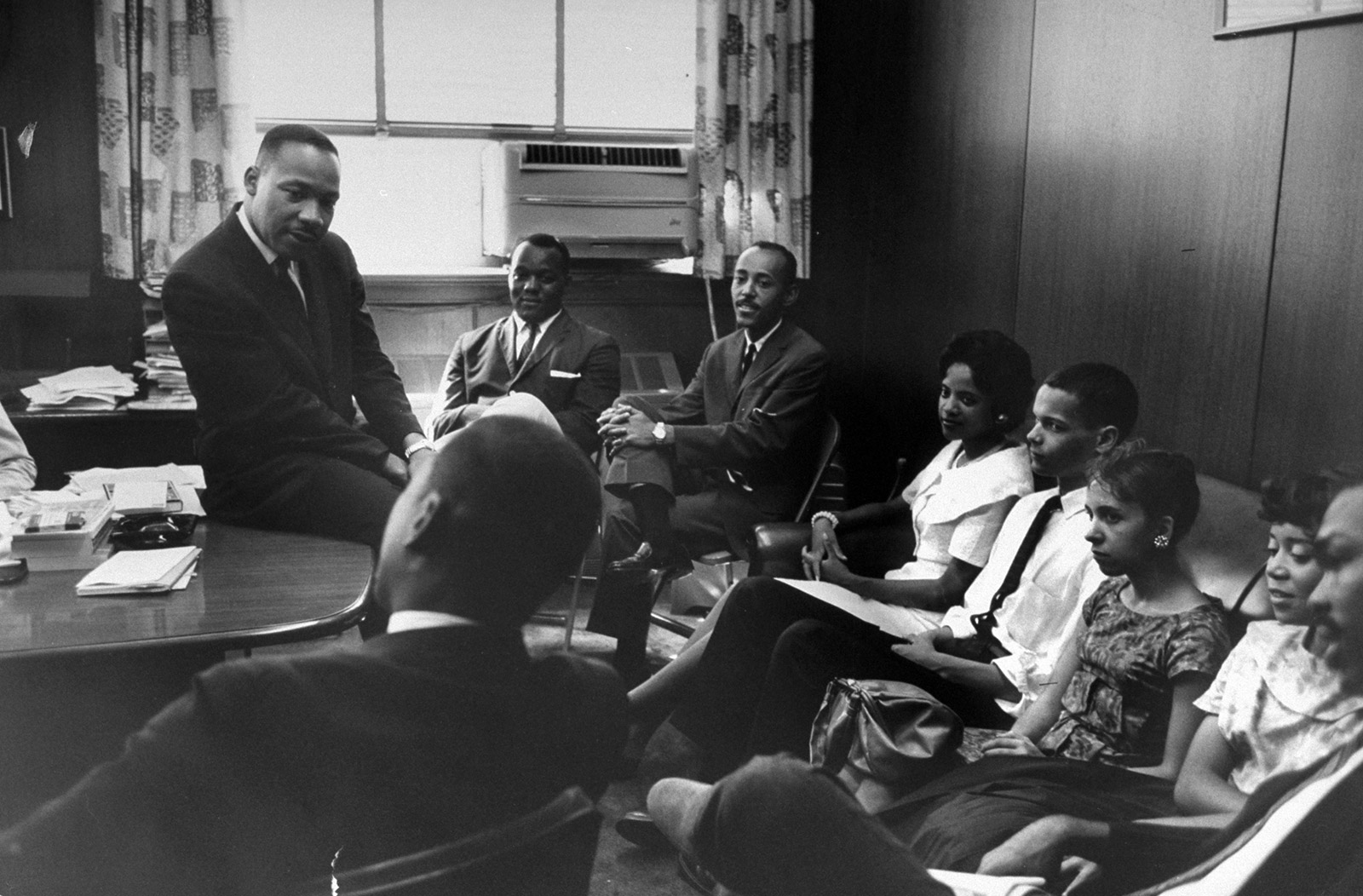
King talks with a group of college students in September 1960. The students were organizing sit-ins to protest Atlanta’s lunch-counter segregation. Donald Uhrbrock/The LIFE Images Collection/Getty Images
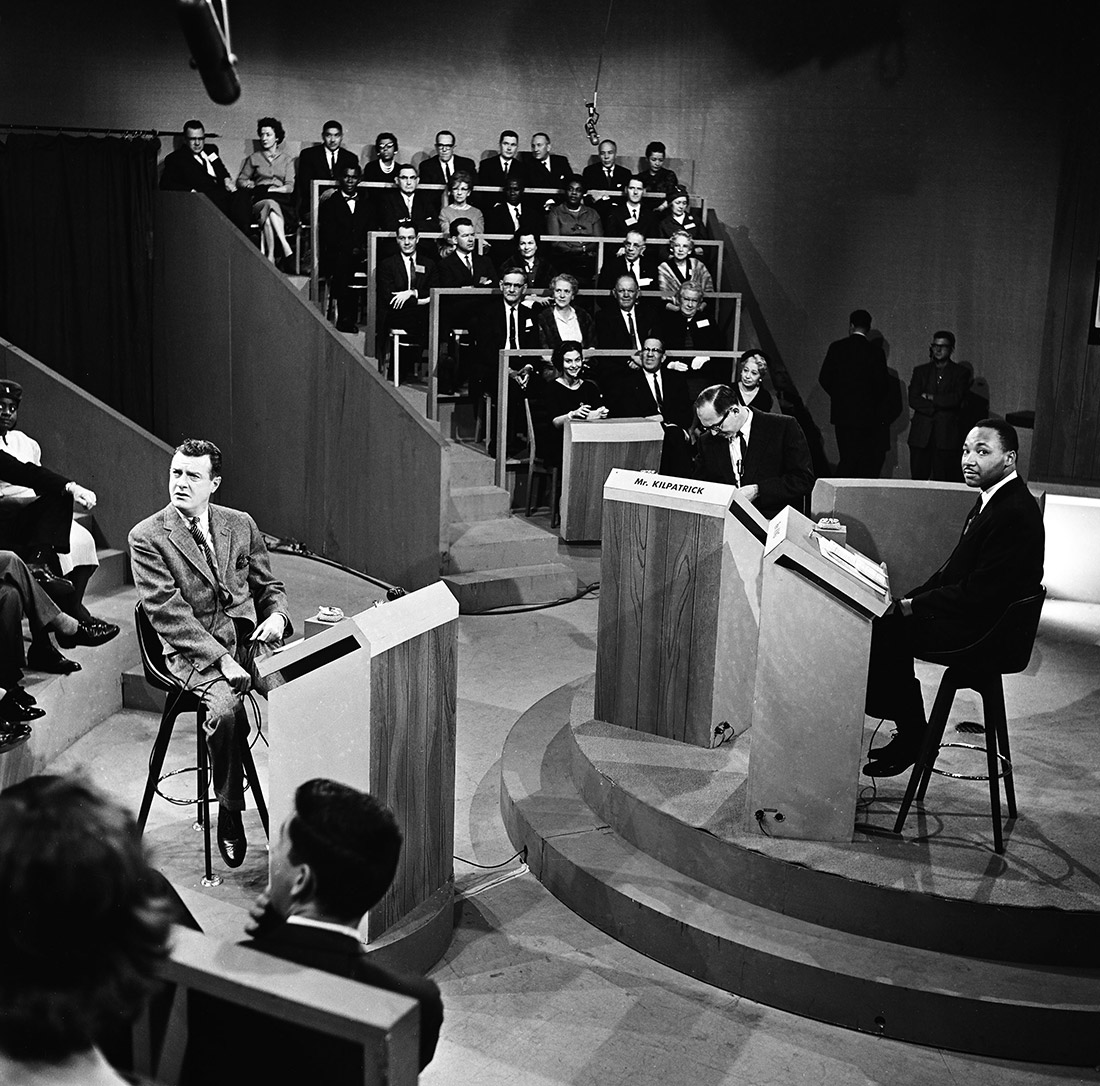
King debates segregation with newspaper editor James J. Kilpatrick in November 1960. Moderating the nationally televised debate was NBC’s John McCaffery, left. Bob Ganley/NBC/Getty Images
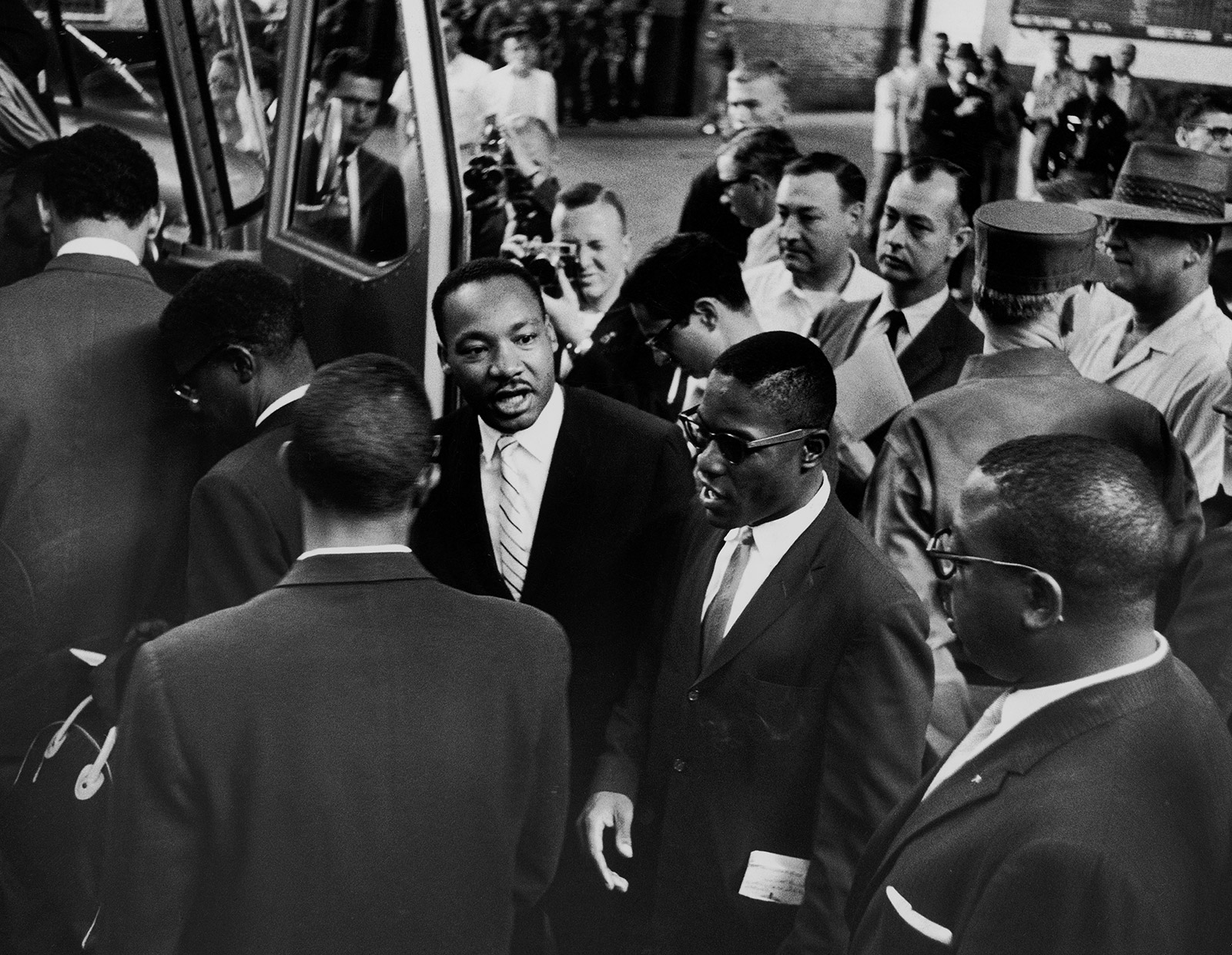
King joins a group of Freedom Riders in May 1961. The Freedom Ride movement involved interstate buses driving into the Deep South to challenge segregation that had persisted despite recent Supreme Court rulings. In some cities, the activists were arrested and beaten. Paul Schutzer/The LIFE Picture Collection/Getty Images
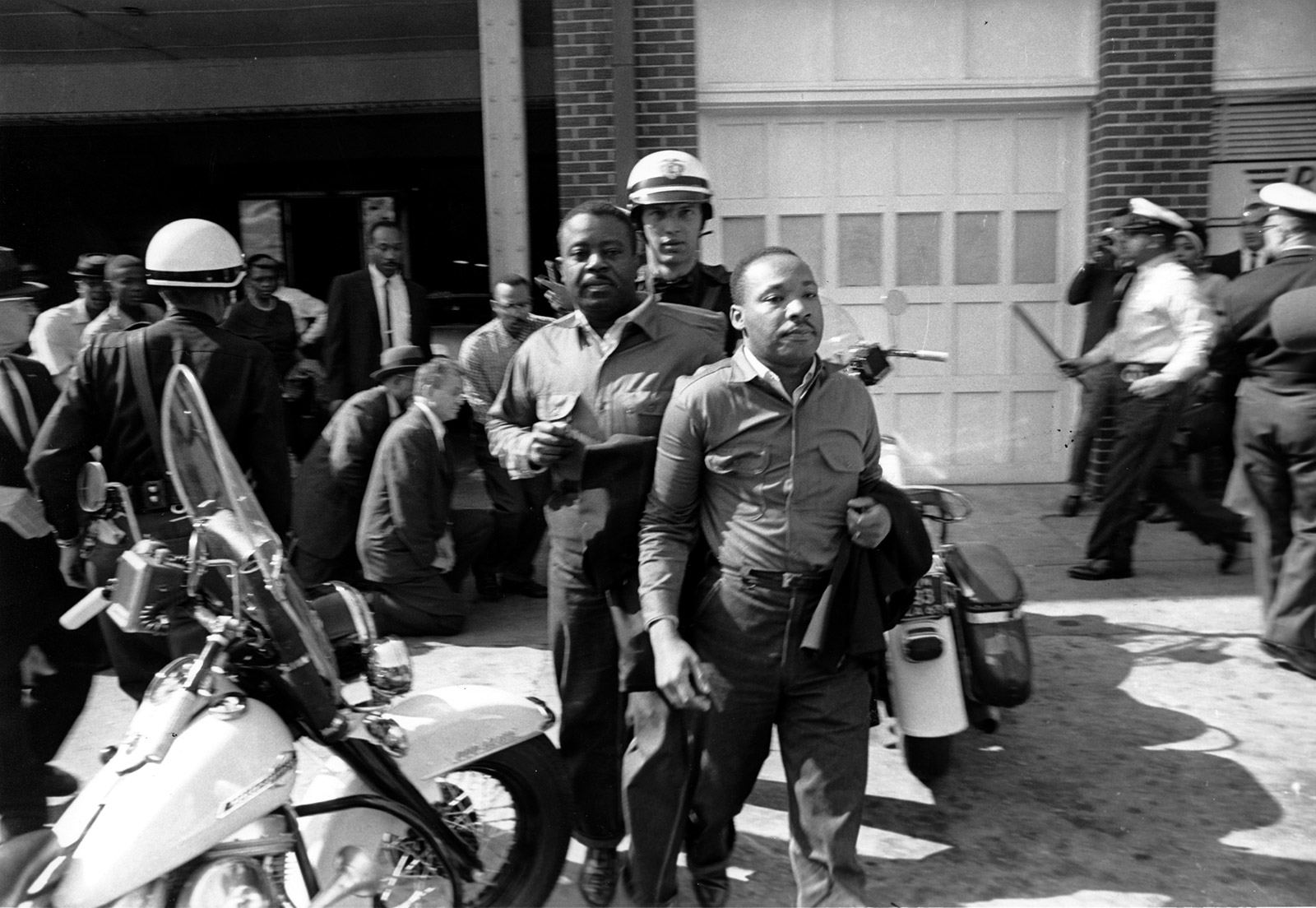
King and the Rev. Ralph Abernathy are taken by a police officer after they led a line of demonstrators into the business section of Birmingham, Alabama, in April 1963. While in solitary confinement, King wrote his “Letter from Birmingham Jail,” which said people have a moral responsibility to disobey unjust laws. AP
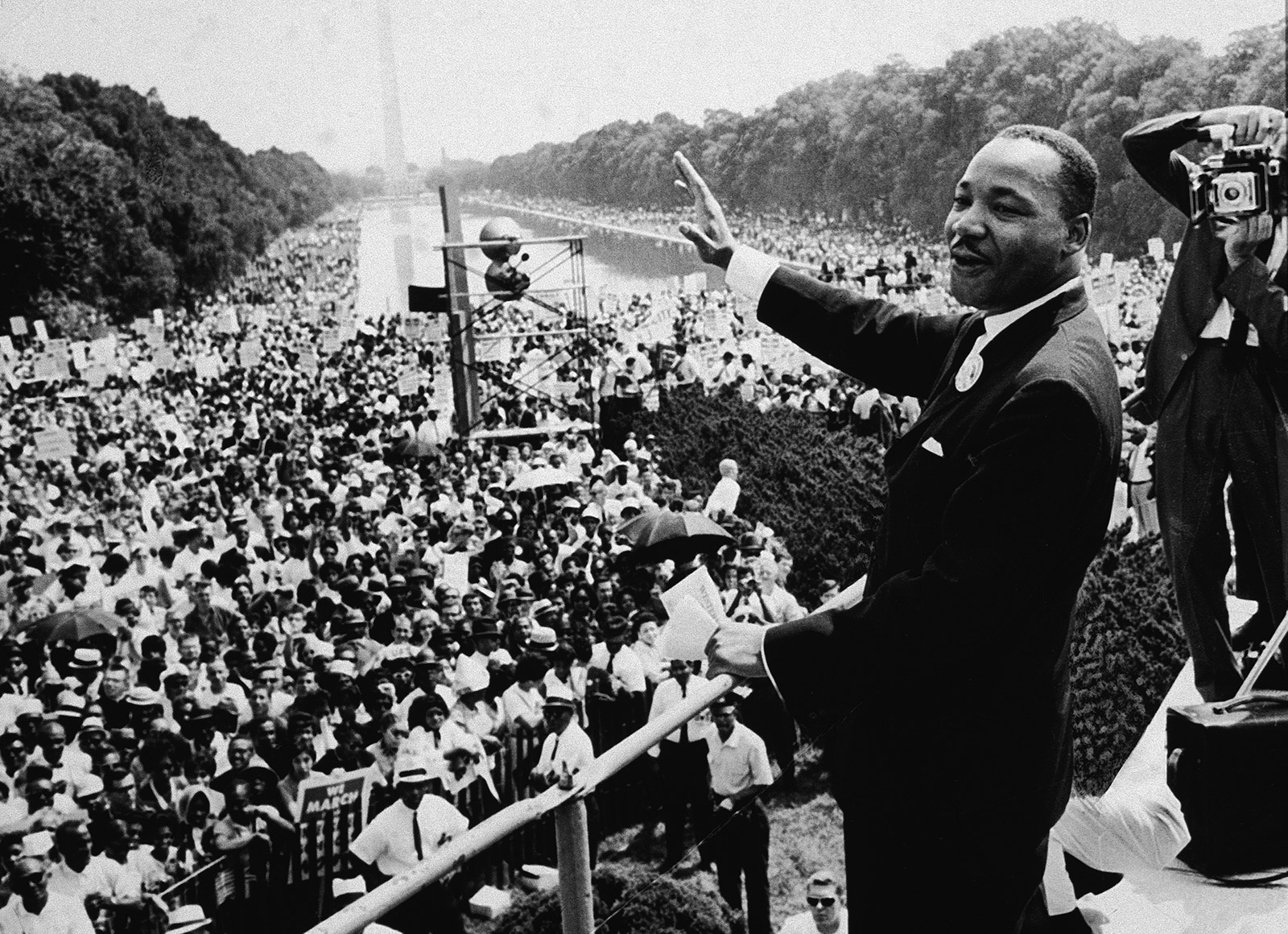
King addresses a crowd during the March on Washington on August 28, 1963. It was here, on the steps of the Lincoln Memorial, that he delivered his iconic “I Have a Dream” speech. “I have a dream that one day this nation will rise up and live out the true meaning of its creed: ‘We hold these truths to be self-evident: that all men are created equal.’ ” CNP/Getty Images
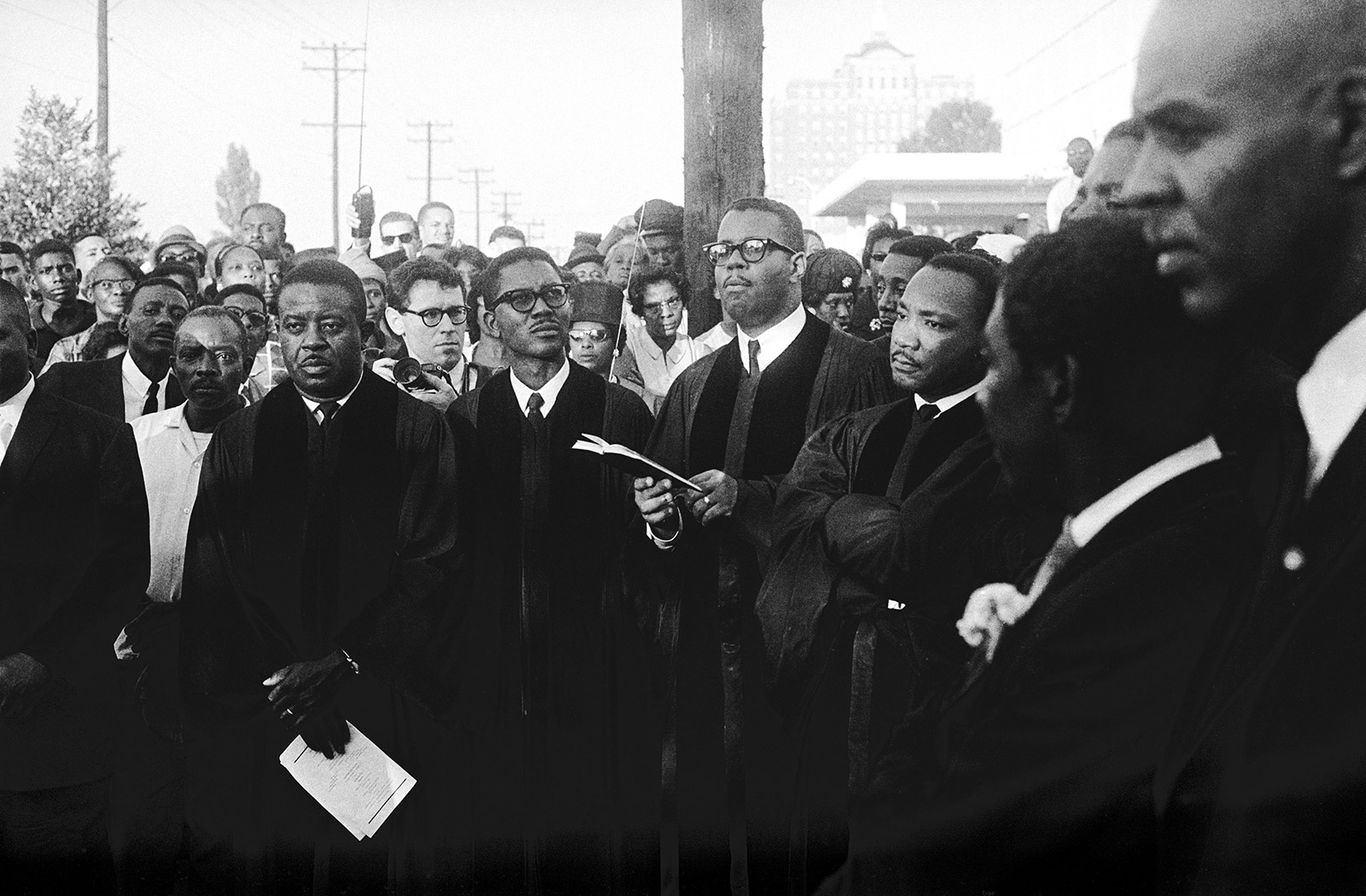
King, third from right, attends a funeral service for the victims of a Birmingham church bombing in September 1963. A bomb blast at the Sixteenth Street Baptist Church killed four African-American girls. “These children — unoffending, innocent and beautiful — were the victims of one of the most vicious and tragic crimes ever perpetrated against humanity,” King said in his eulogy. “And yet they died nobly. They are the martyred heroines of a holy crusade for freedom and human dignity.” Burton Mcneely/The LIFE Images Collection/Getty Images
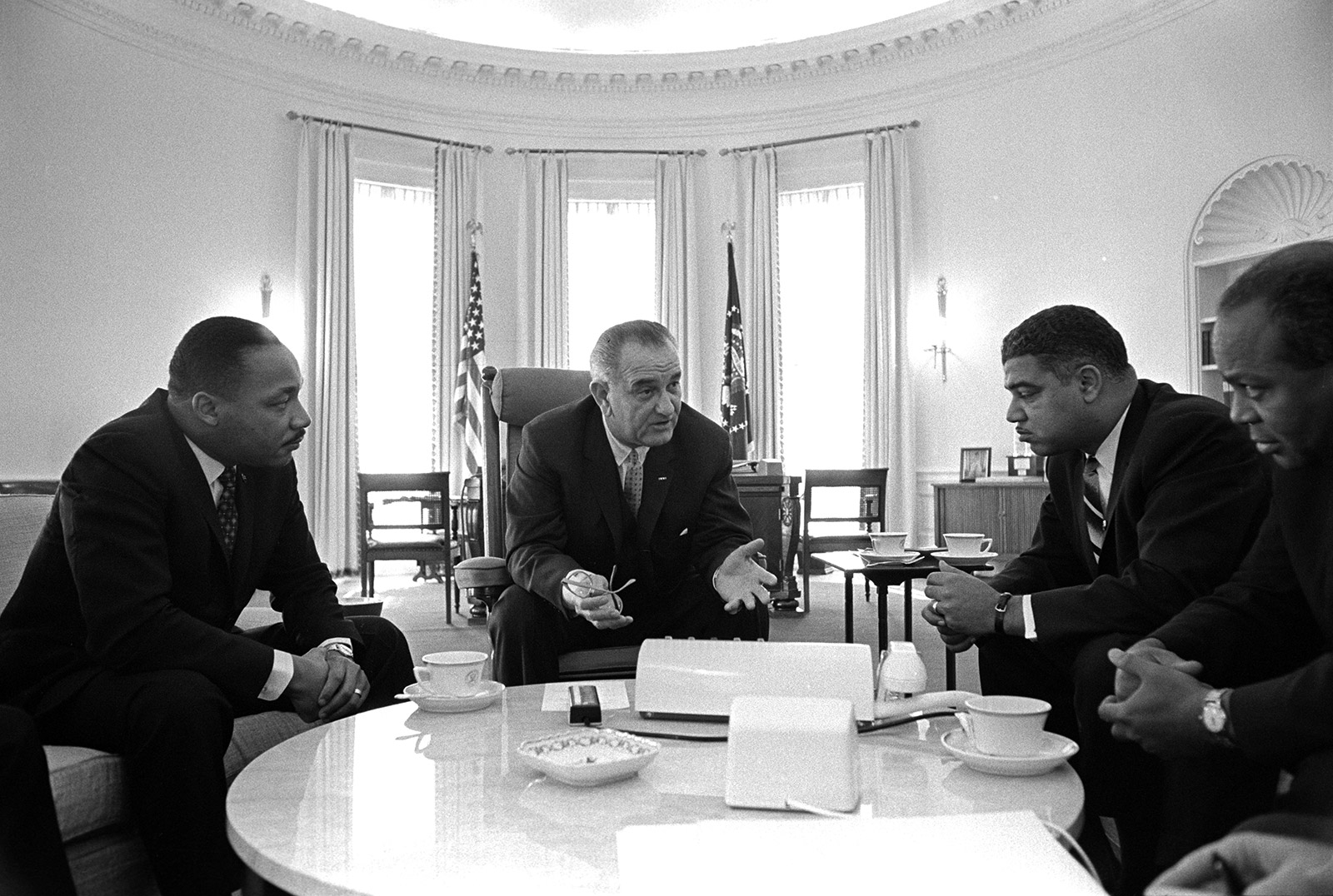
US President Lyndon B. Johnson talks with King and other civil rights leaders at the White House in January 1964. On July 2, 1964, Johnson signed the Civil Rights Act into law. Yoichi Okamoto/LBJ Presidential Library
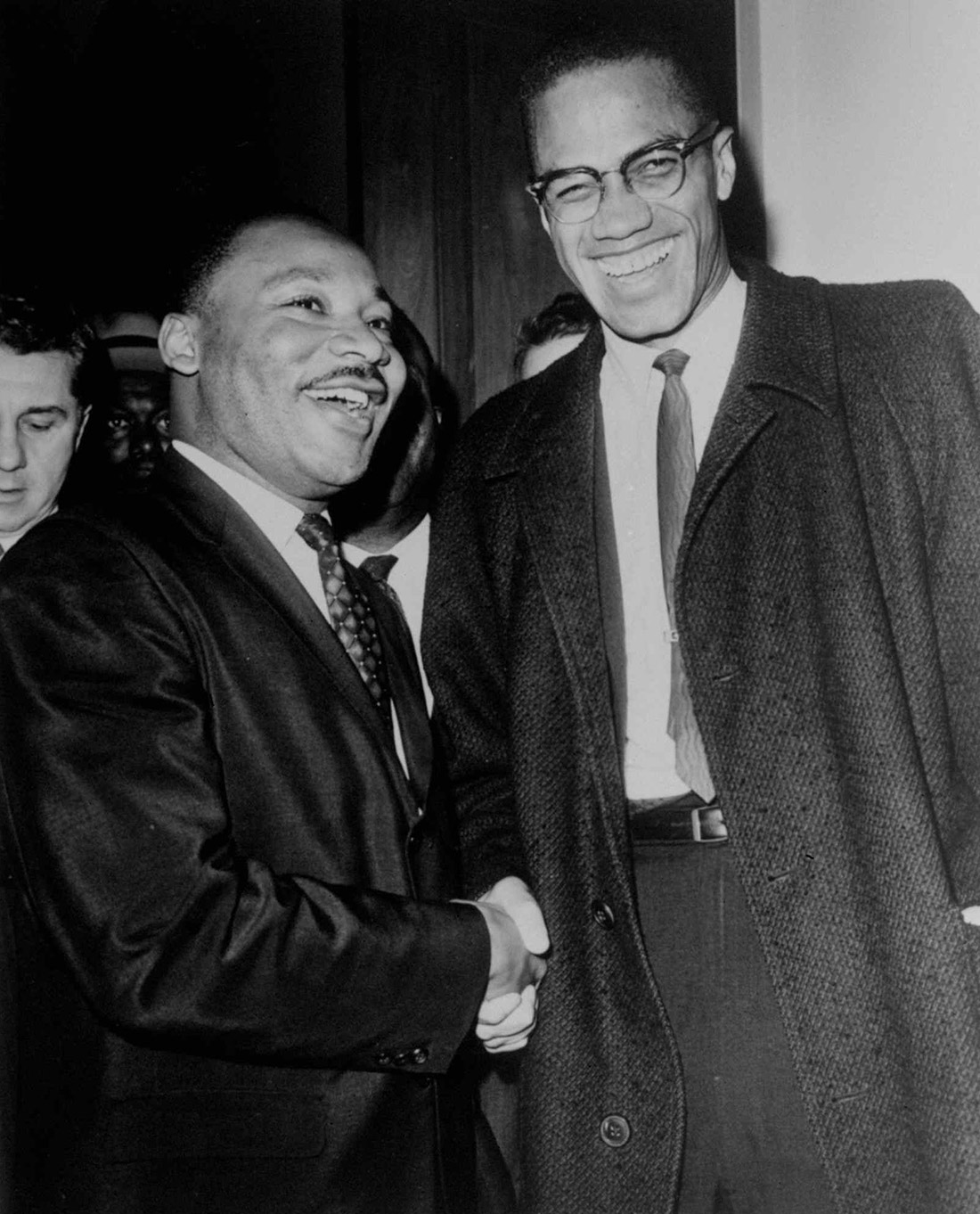
King shakes hands with Malcolm X, another civil rights icon, in March 1964. The two had different approaches, but scholars said they were becoming more like each other in the last years of their lives. Henry Griffin/AP
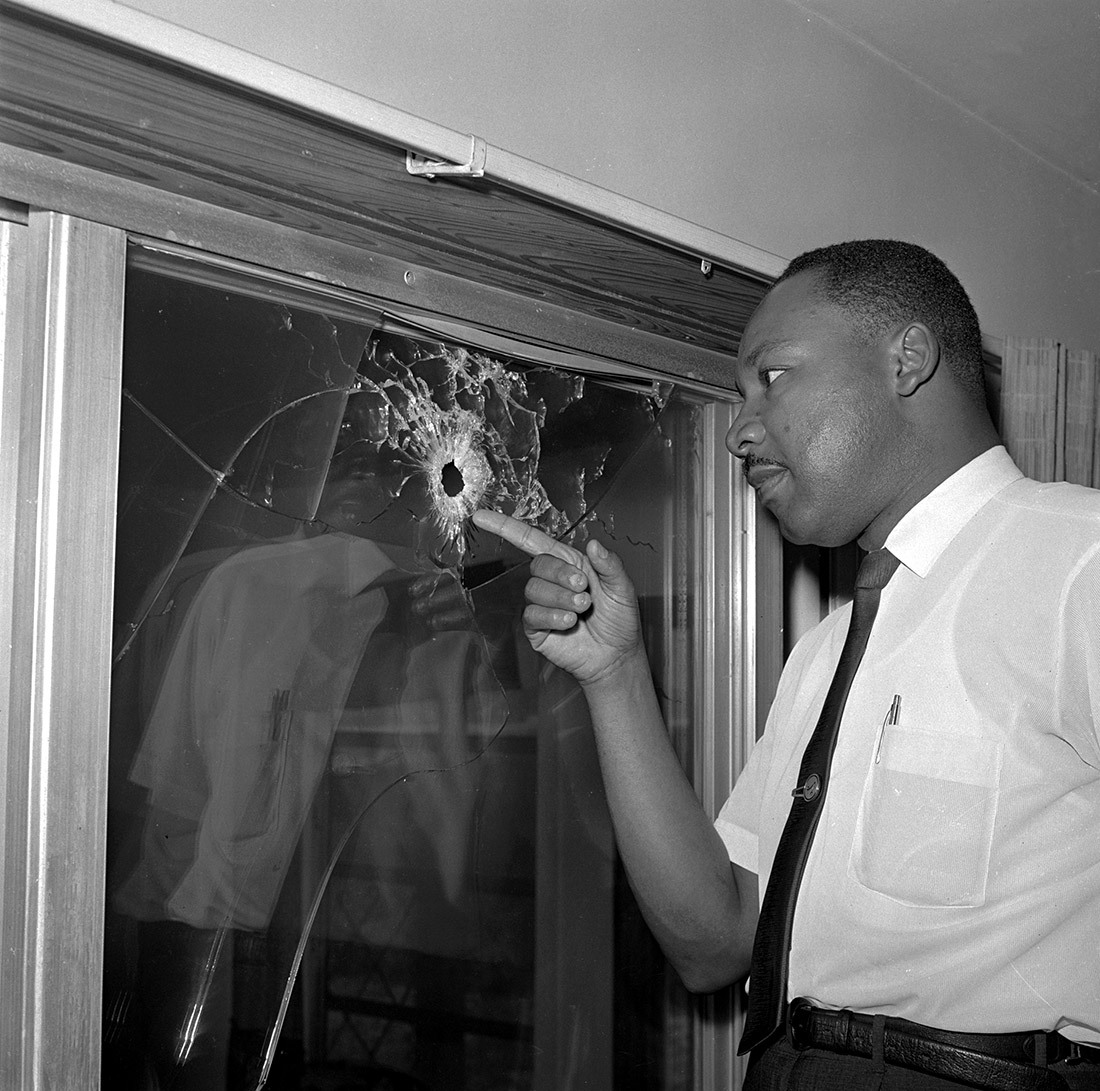
King looks at a bullet hole in the glass door of his rented beach cottage in St. Augustine, Florida, on June 5, 1964. No one was in the house at the time of the shooting. Jim Kerlin/AP
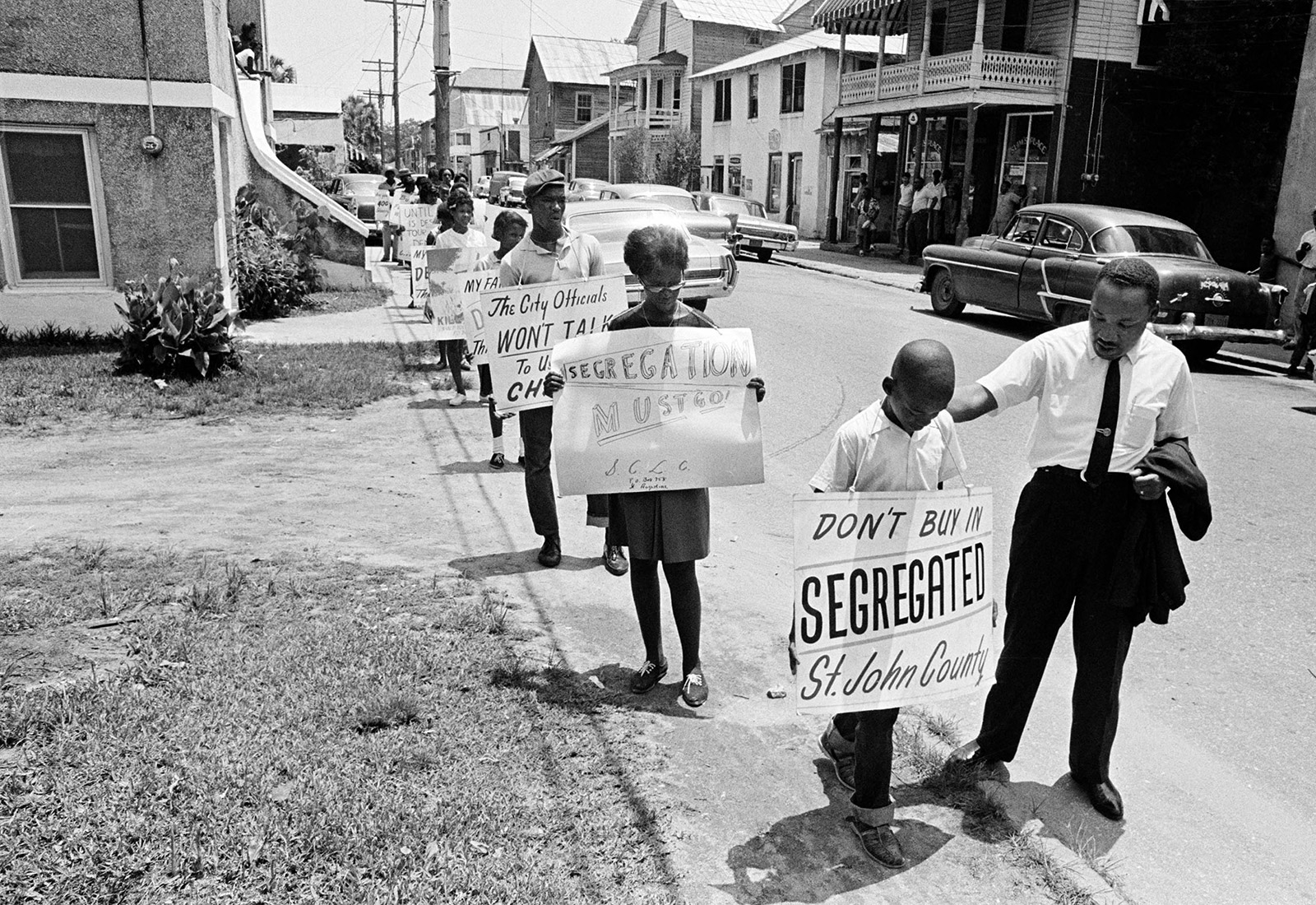
King pats a youngster on the back as he pickets in St. Augustine on June 10, 1964. AP
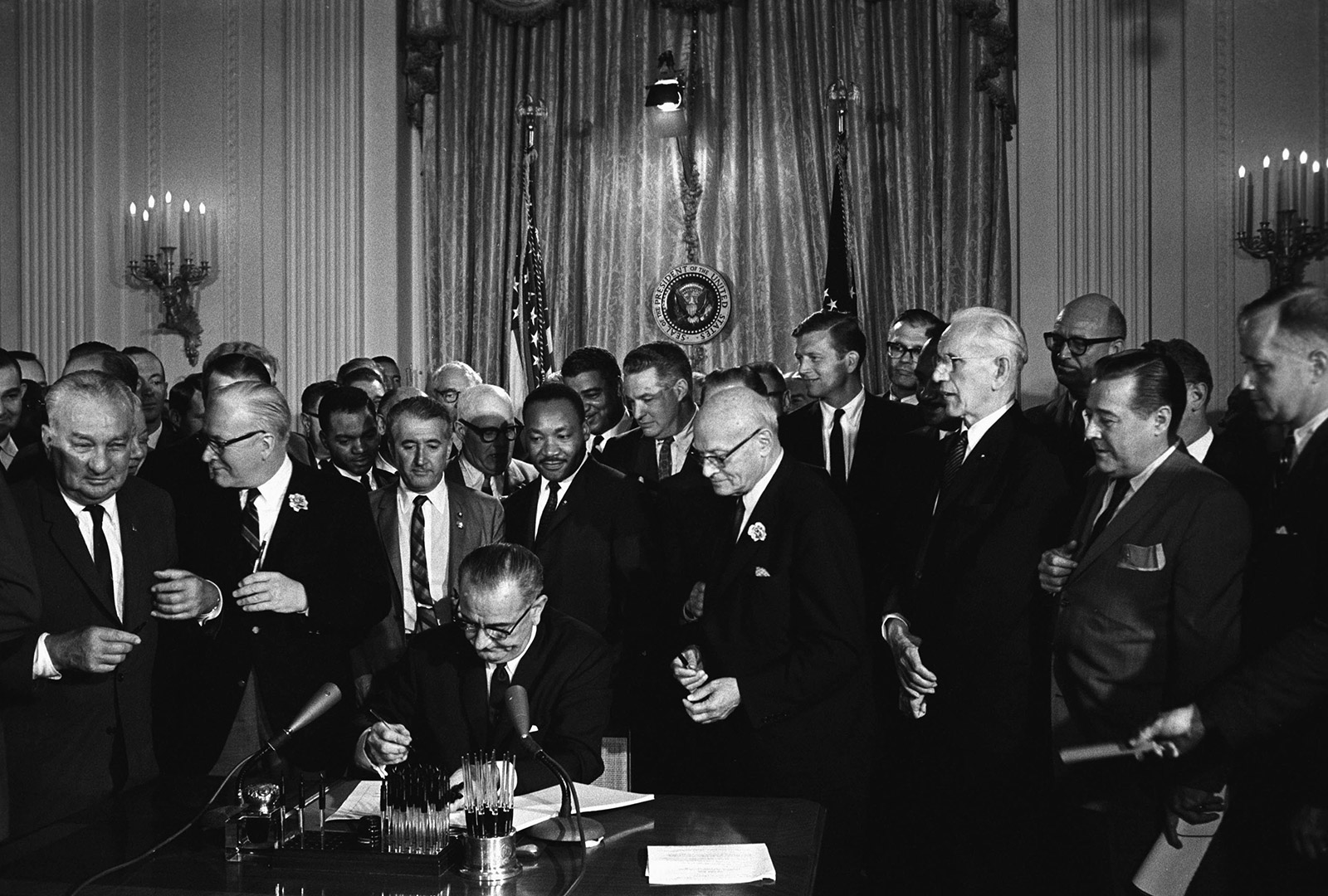
King watches President Johnson sign the Civil Rights Act on July 2, 1964. The legislation prohibited discrimination on the basis of race, color, religion, sex or national origin. Photo12/UIG/Getty Images
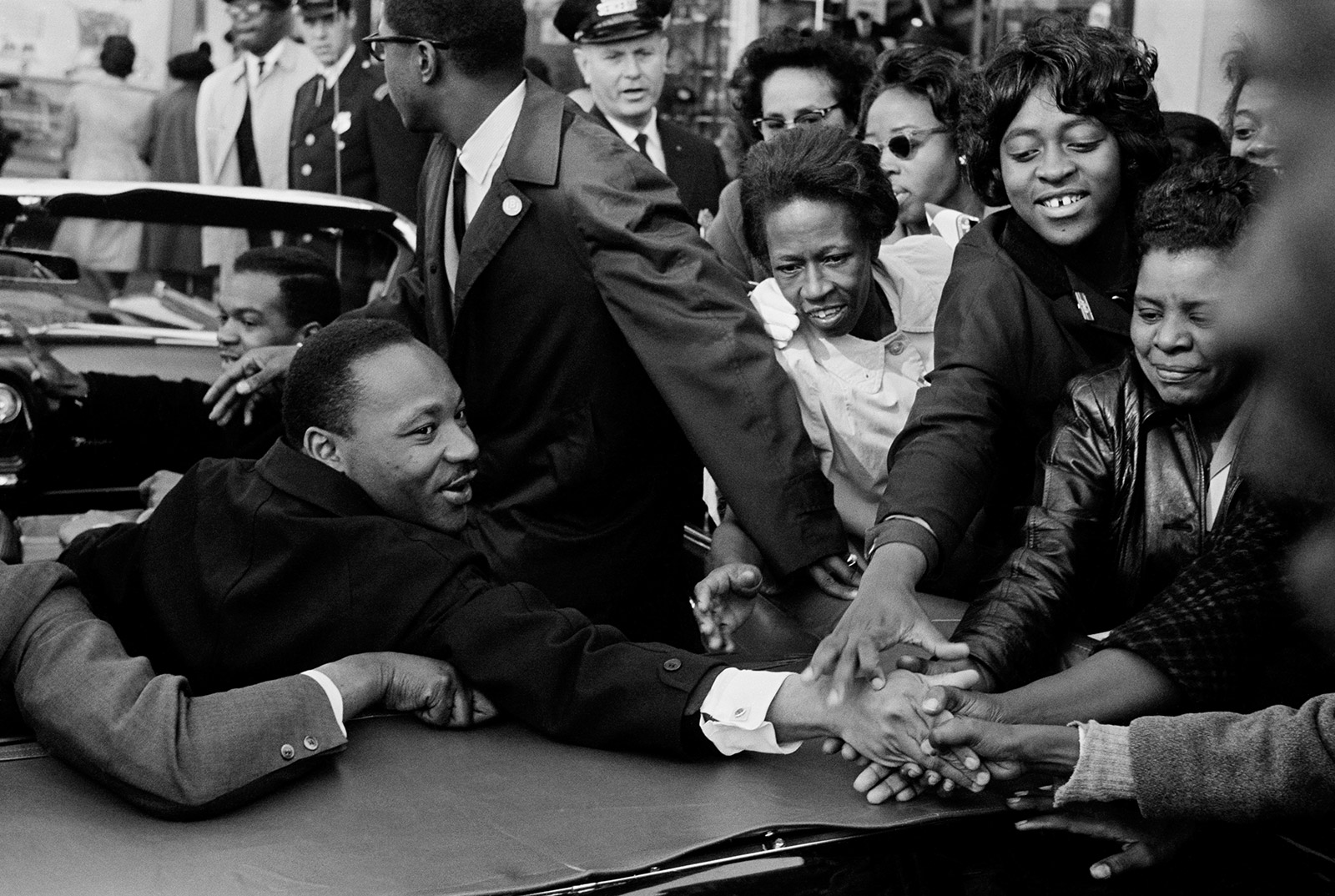
King is greeted in Baltimore in October 1964, after he received the Nobel Peace Prize. At the time, he was the youngest person ever to receive the award. Leonard Freed/Magnum Photos
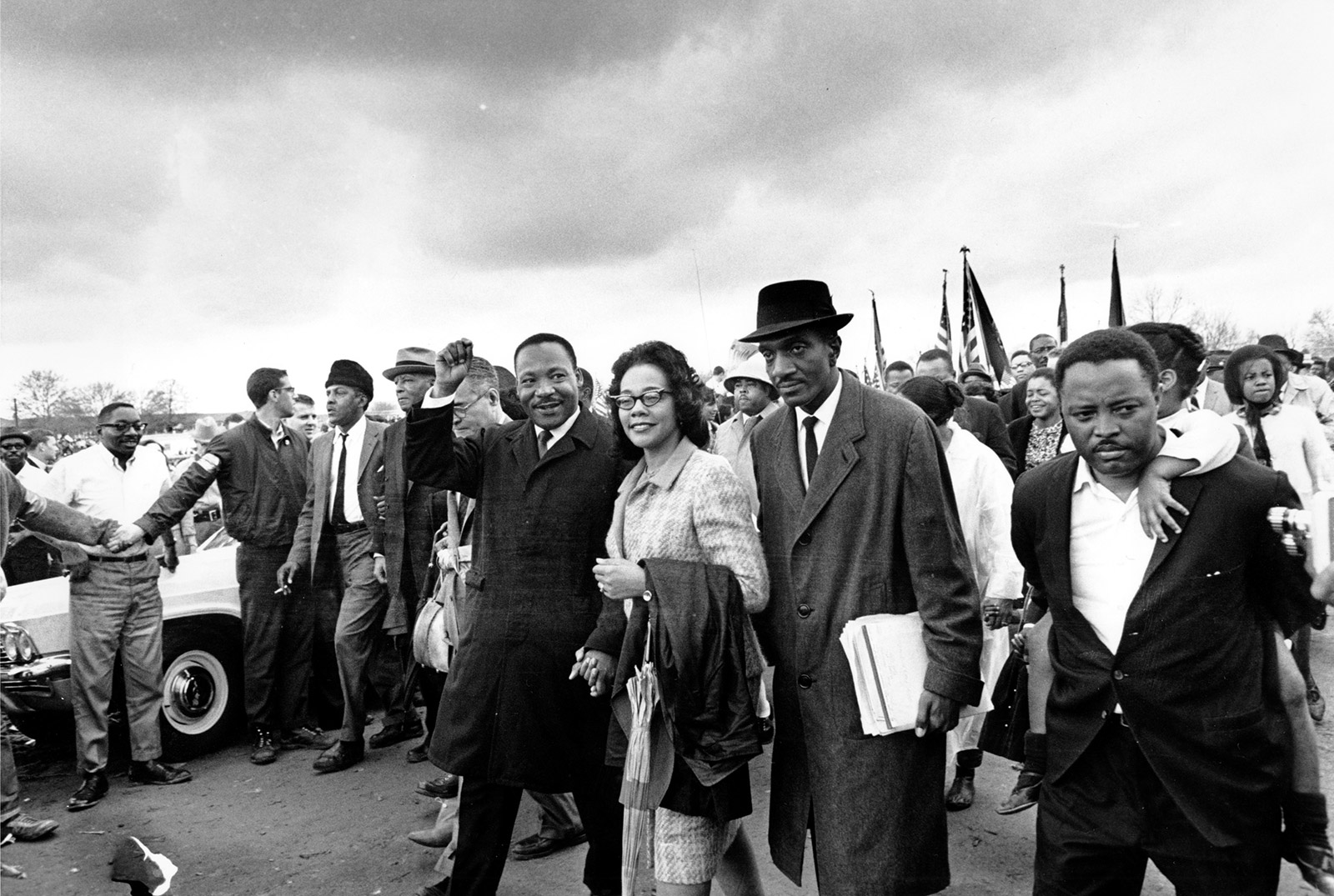
King and his wife lead the final stretch of a march from Selma, Alabama, to the state capital of Montgomery on March 25, 1965. About 25,000 people had marched to protest discriminatory practices, such as poll taxes and literacy tests, that prevented many black people from voting in the South. It was the last of three marches that month. The first ended in clashes with police and is now known as “Bloody Sunday.” AP
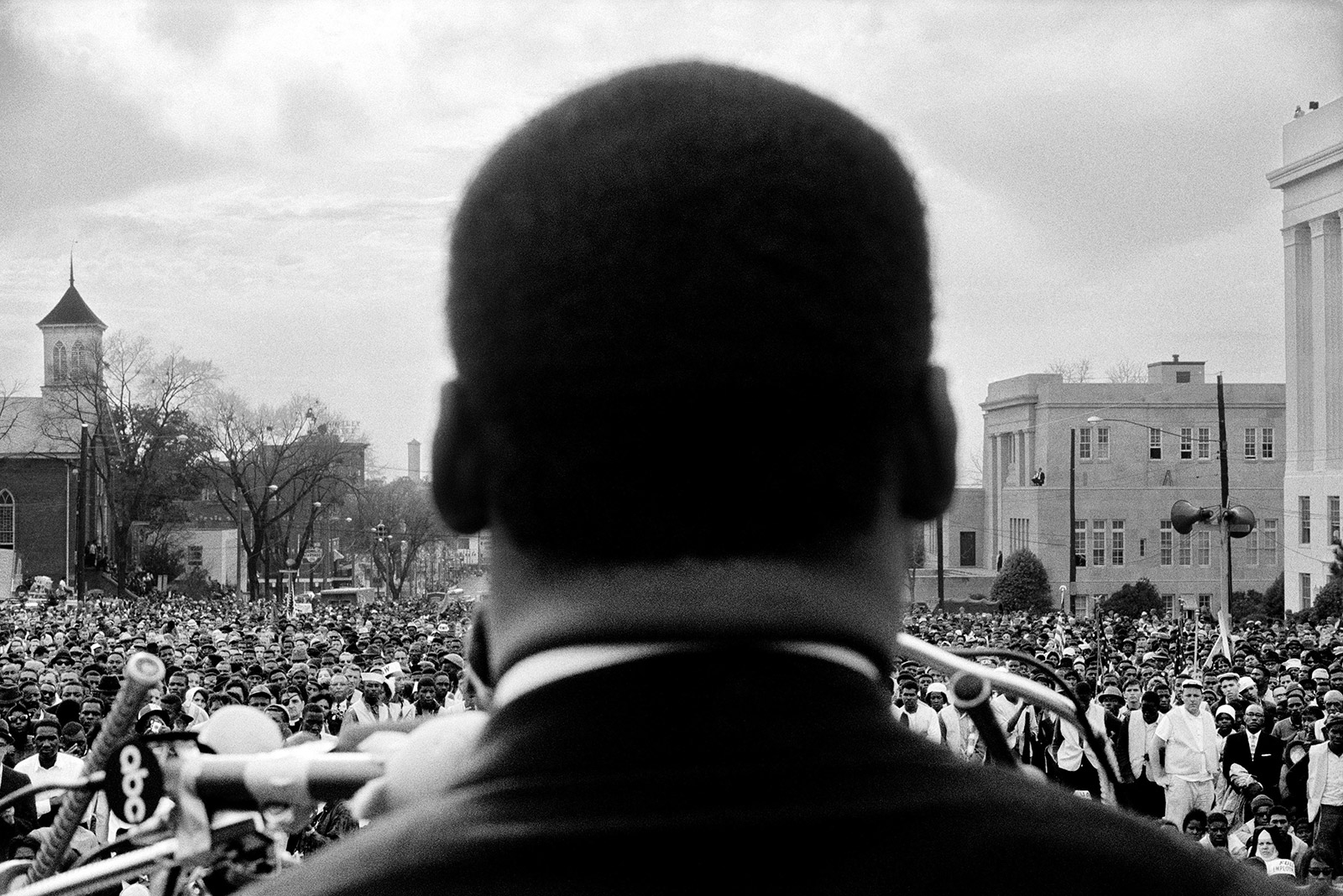
King speaks to protesters at the conclusion of the Selma to Montgomery march. It was here that he famously said “the arc of the moral universe is long, but it bends toward justice.” A few months later, President Johnson signed the Voting Rights Act, which ensured that everyone’s right to vote would be protected and enforced. Stephen Somerstein/Getty Images
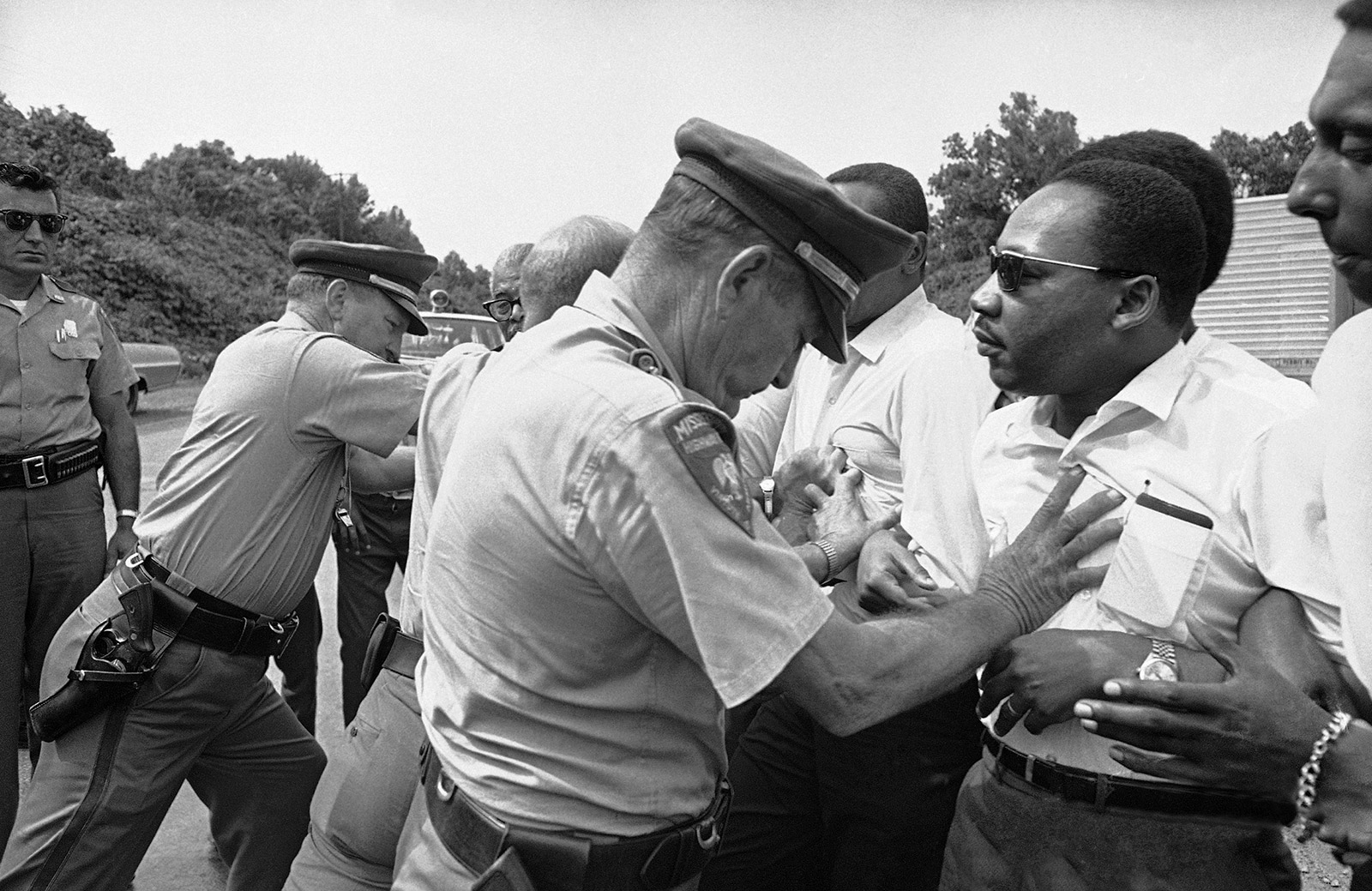
Mississippi patrolmen shove King during the “March Against Fear” from Memphis, Tennessee, to Jackson, Mississippi, in June 1966. AP
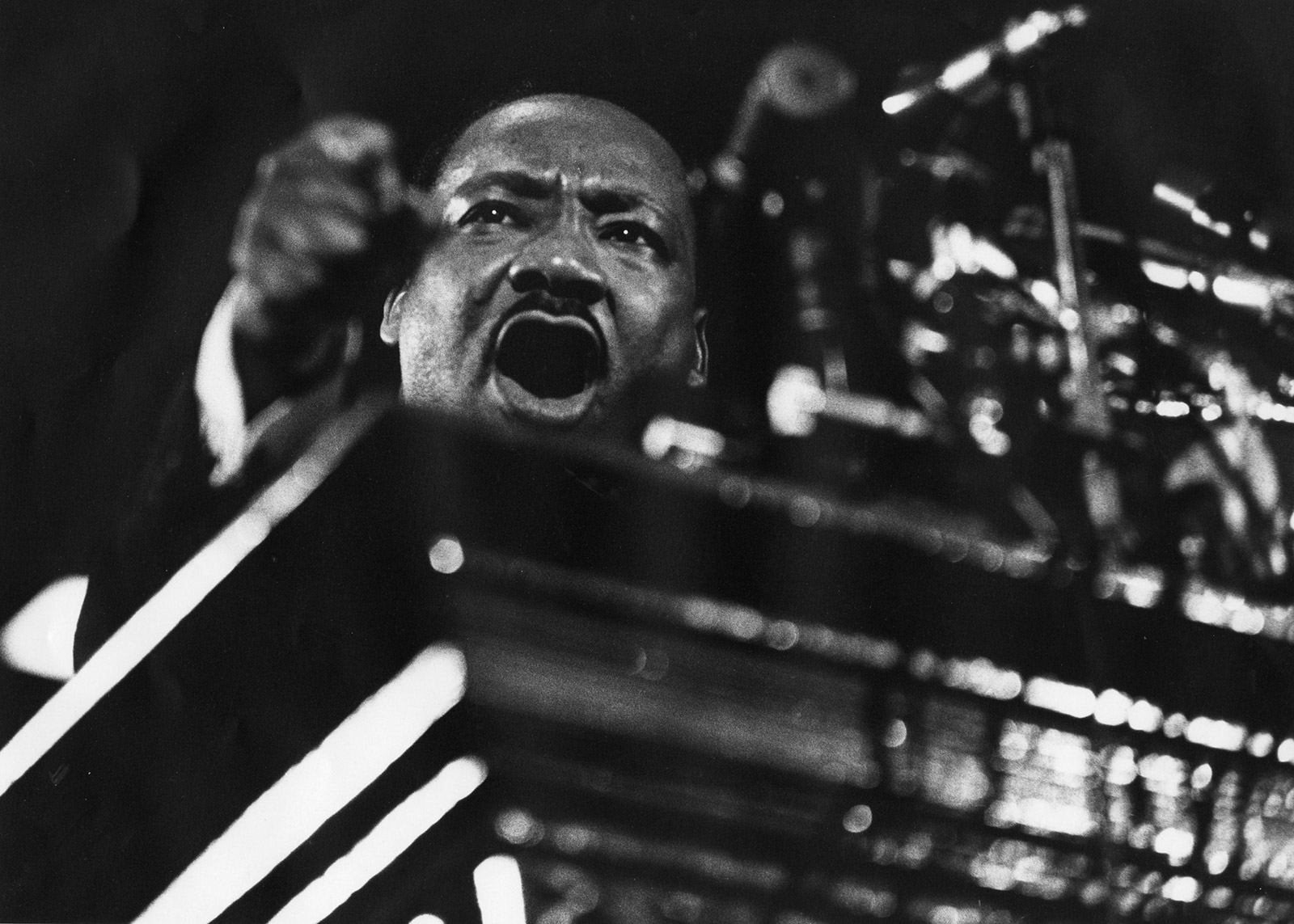
King speaks at a church in Washington in February 1968. Matthew Lewis/The Washington Post/Getty Images
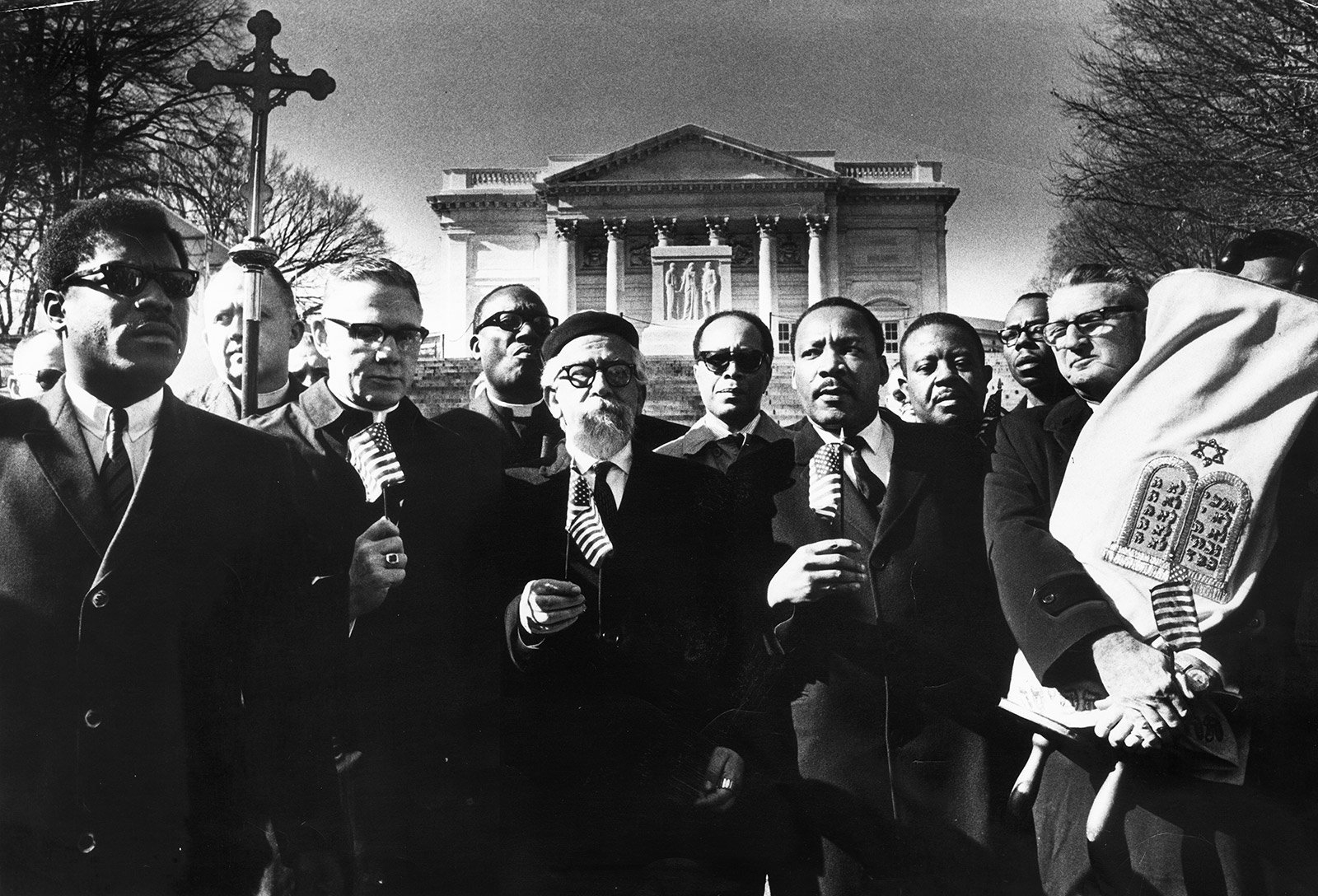
King joins a Vietnam War protest at Arlington National Cemetery in February 1968. Charles Del Vecchio/The Washington Post/Getty Images
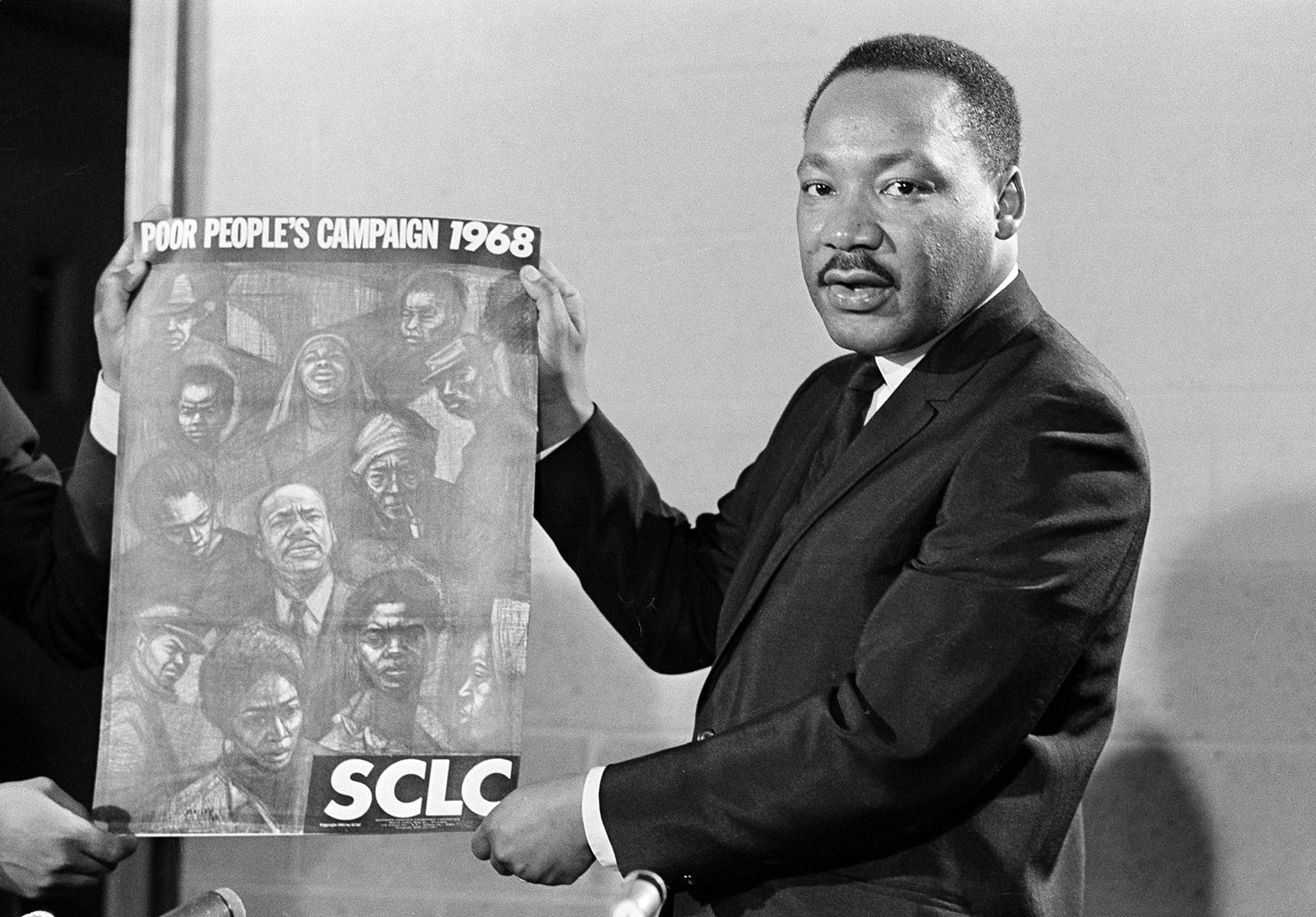
In March 1968, King displays a poster to be used for an upcoming Poor People’s Campaign. The campaign was set to begin on April 22, 1968. Horace Cort/AP
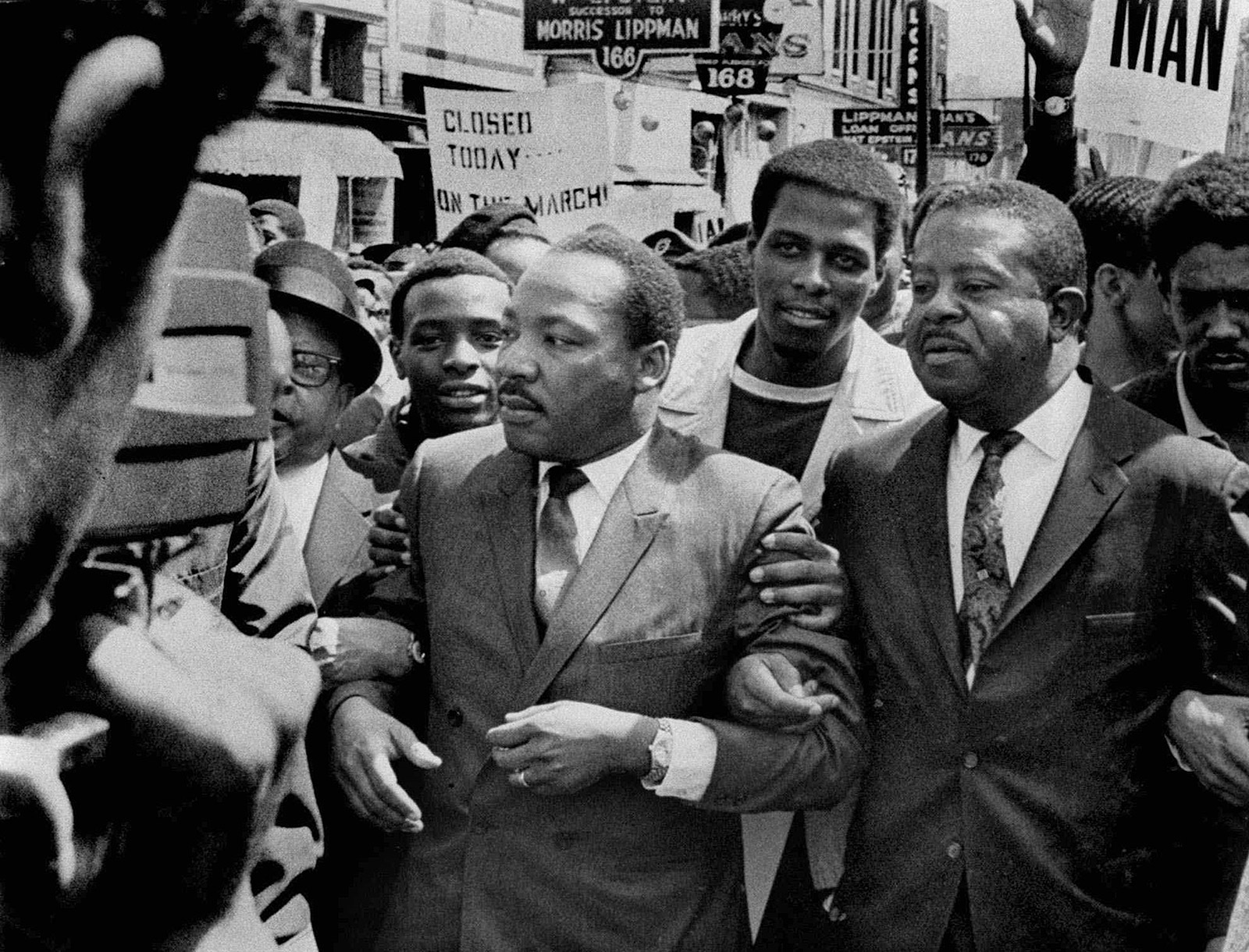
King and the Rev. Ralph Abernathy, right, lead a march on behalf of striking sanitation workers in Memphis, Tennessee, on March 28, 1968. Two sanitation workers in the city had been killed by a malfunctioning garbage truck, and King came to Memphis to support the strike. Sam Melhorn/The Commercial Appeal/AP
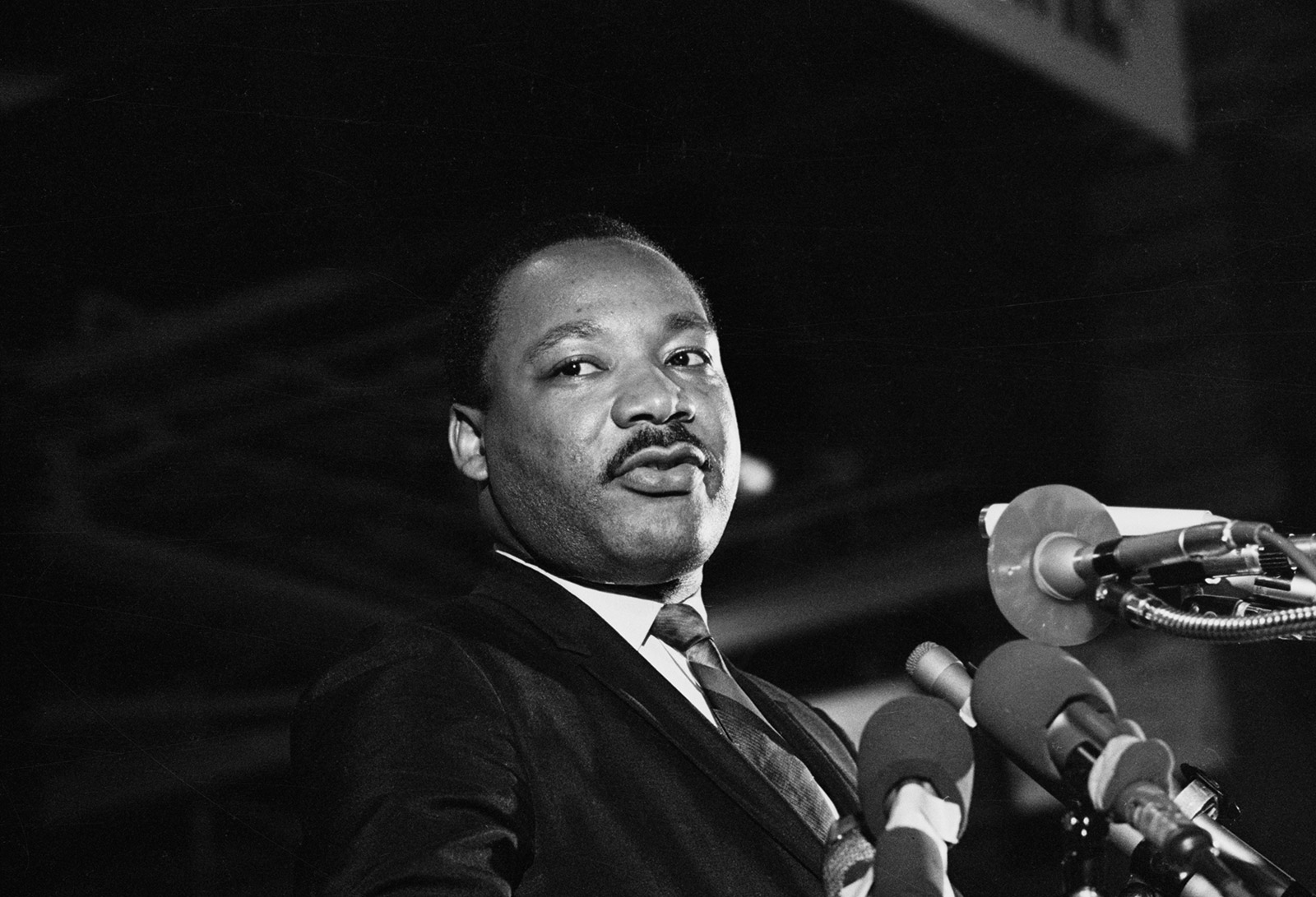
This photo, taken during a rally in Memphis on April 3, 1968, is one of the last pictures ever taken of King. Here, he delivered his final speech, which is now known as the “I’ve Been to the Mountaintop” speech. “We’ve got some difficult days ahead,” he said. “But it doesn’t matter with me now. Because I’ve been to the mountaintop. And I don’t mind. Like anybody, I would like to live a long life. Longevity has its place. But I’m not concerned about that now. I just want to do God’s will. And He’s allowed me to go up to the mountain. And I’ve looked over. And I’ve seen the promised land. I may not get there with you. But I want you to know tonight, that we, as a people, will get to the promised land.” Bettmann Archive/Getty Images
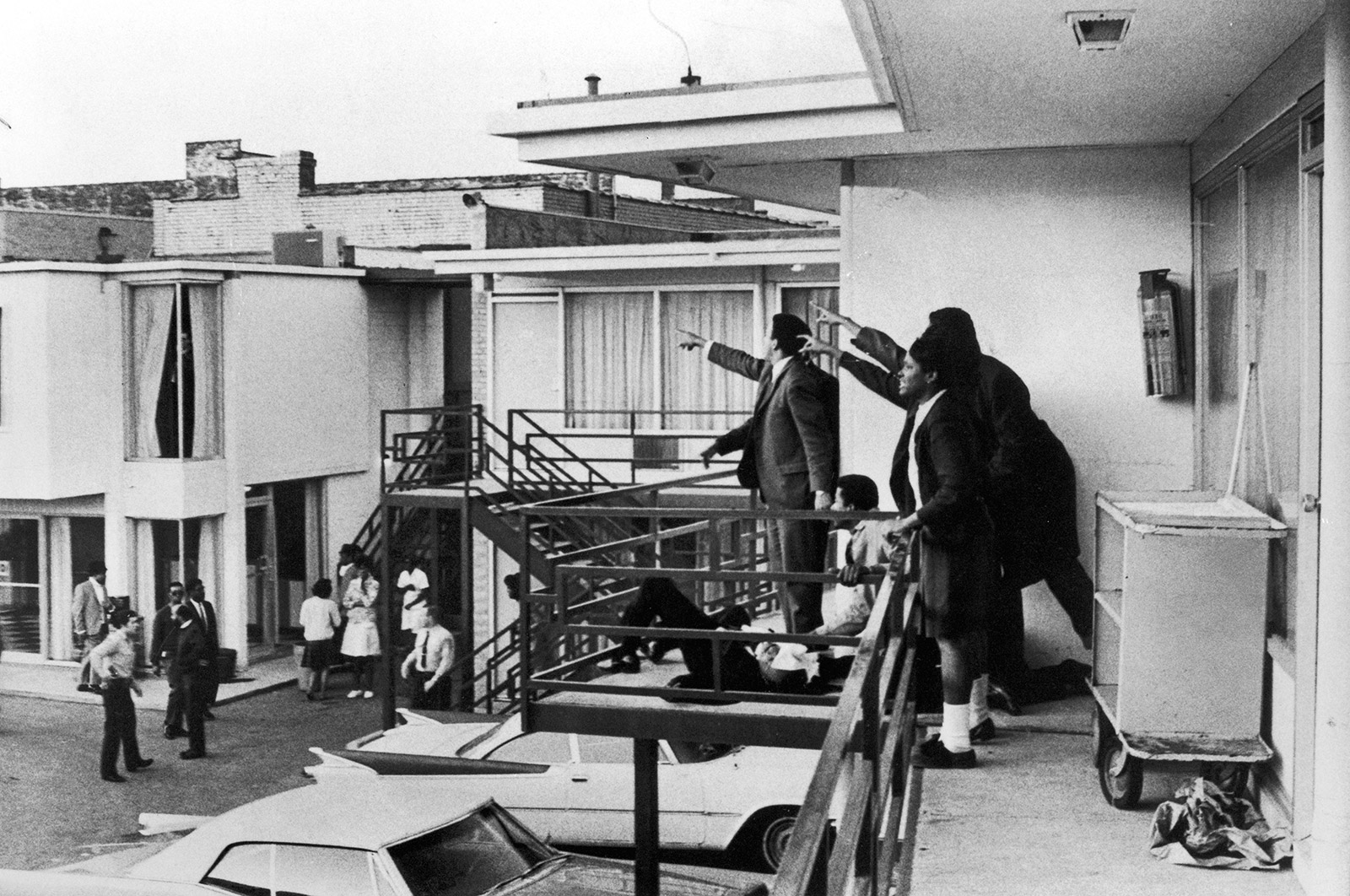
On April 4, 1968, King was fatally shot on the balcony of the Lorraine Motel in Memphis. Here, people stand over King’s fallen body as they point in the direction that the gunshots came from. James Earl Ray was arrested in London in June 1968, and the next year he confessed to the crime and was sentenced to 99 years in prison. Joseph Louw/The LIFE Images Collection/Getty Images
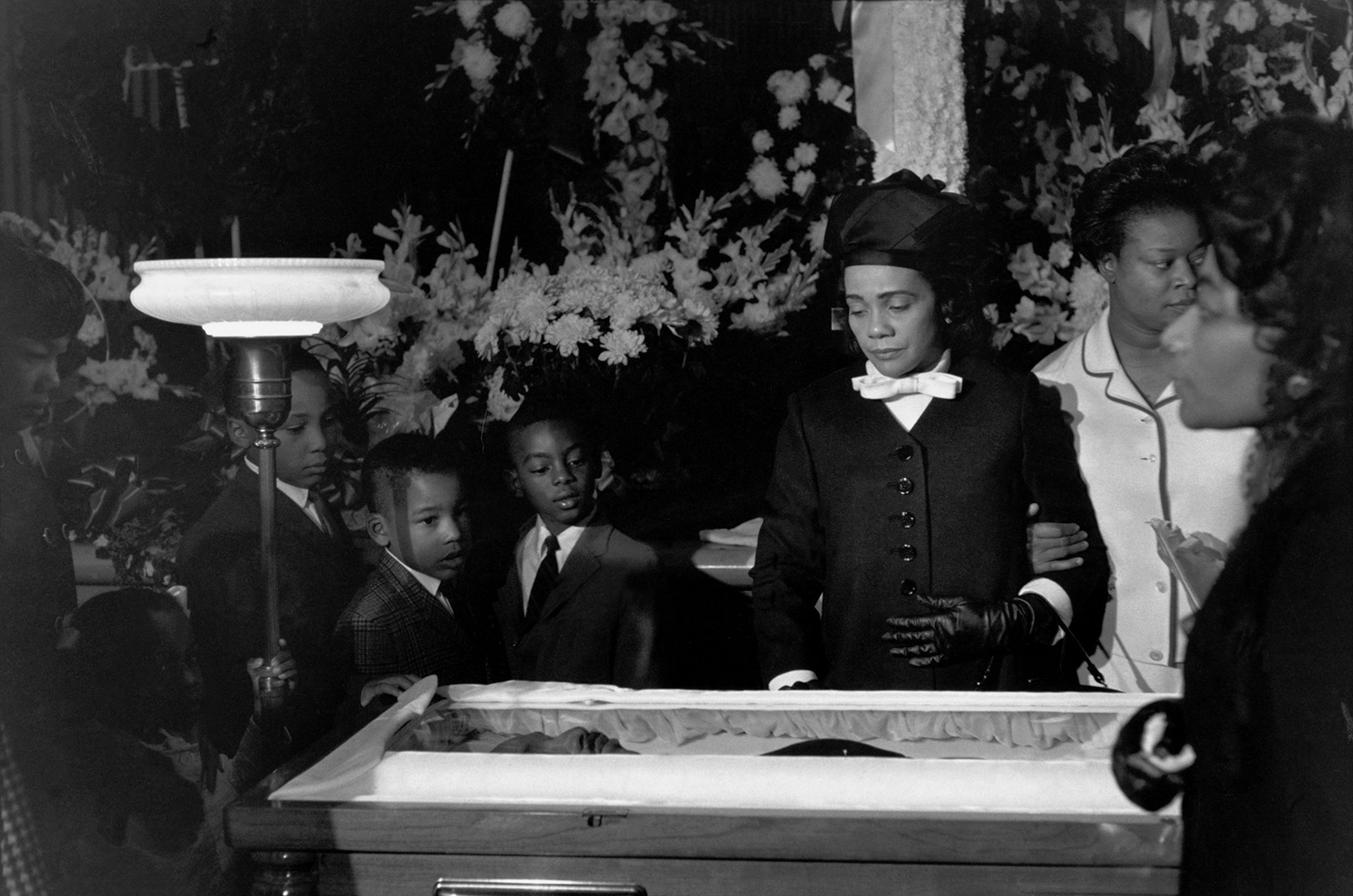
Coretta King and her children gather around her husband’s open coffin in Atlanta in 1968. He was 39 years old. Constantine Manos/Magnum Photos
Produced by Brett Roegiers and Kyle Almond
You may also like
-
UK coronavirus variant has been reported in 86 countries, WHO says
-
NASA technology can help save whale sharks says Australian marine biologist and ECOCEAN founder, Brad Norman
-
California Twentynine Palms: Explosives are missing from the nation’s largest Marine Corps base and an investigation is underway
-
Trump unhappy with his impeachment attorney’s performance, sources say
-
Lunar New Year 2021: Ushering in the Year of the Ox

